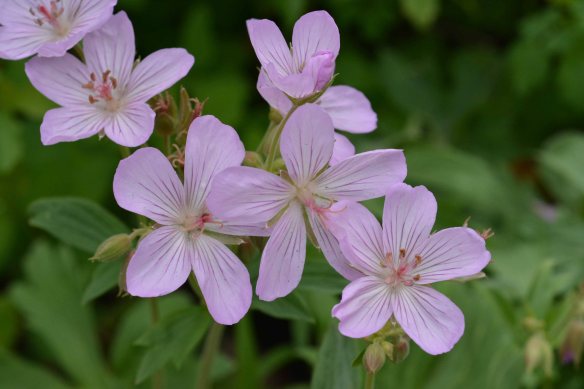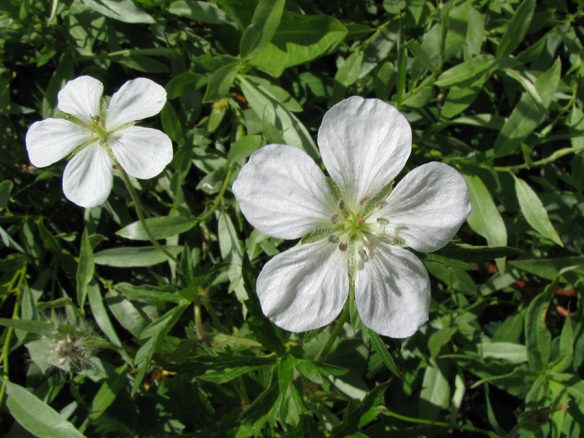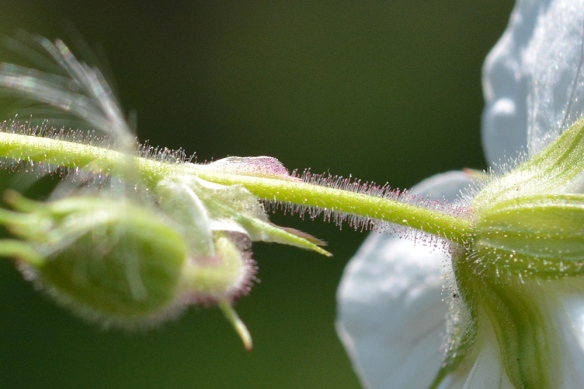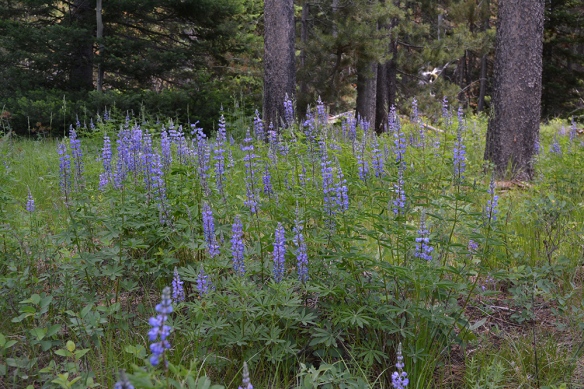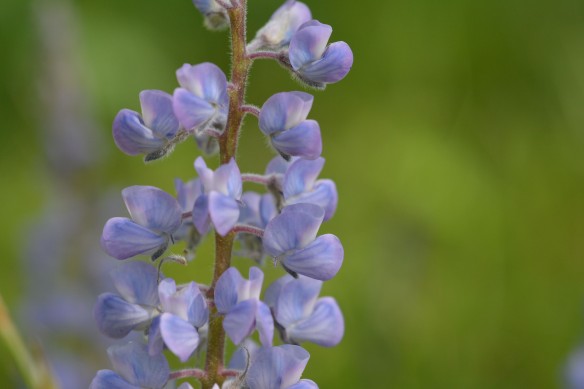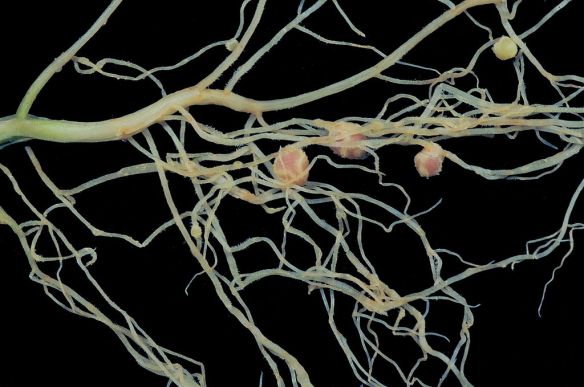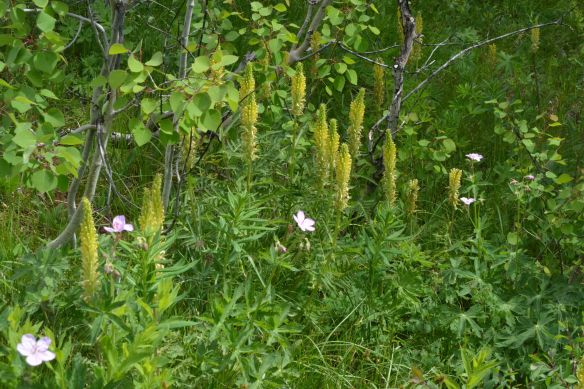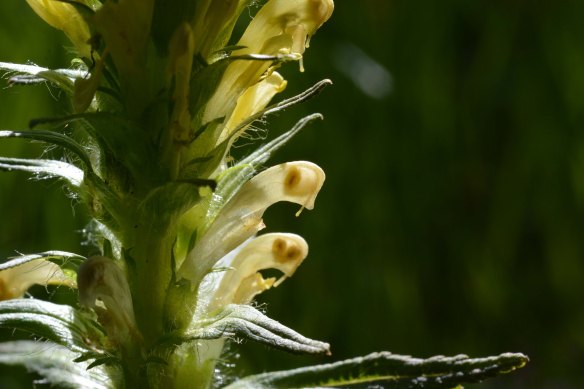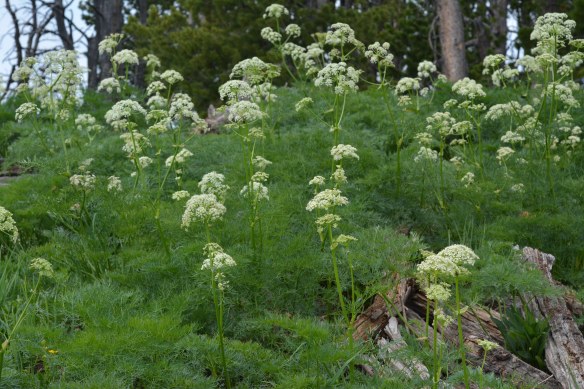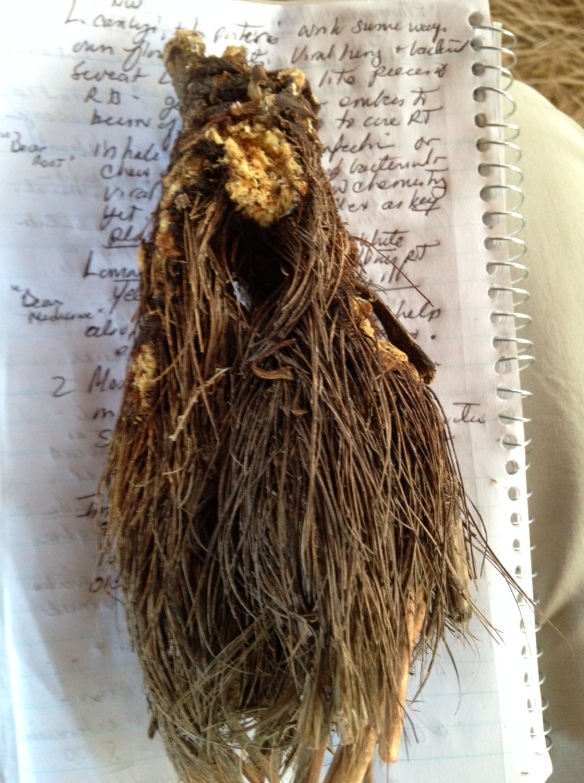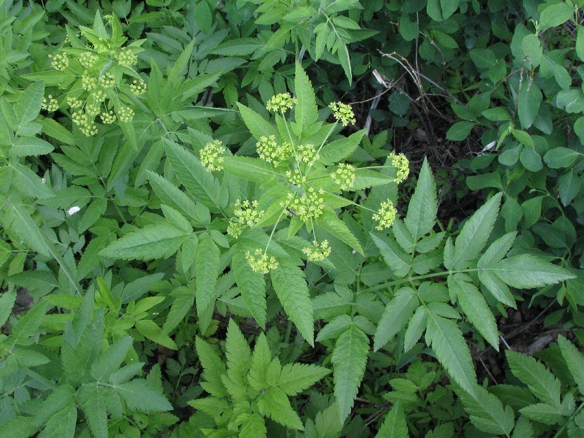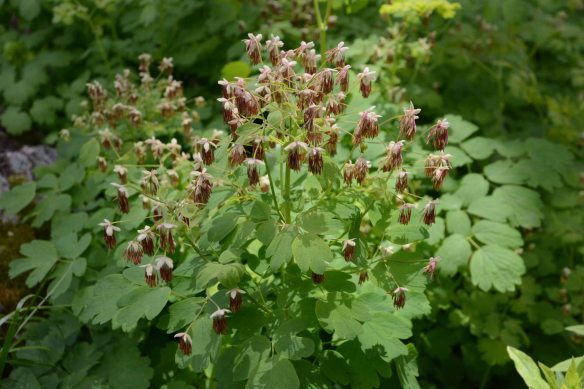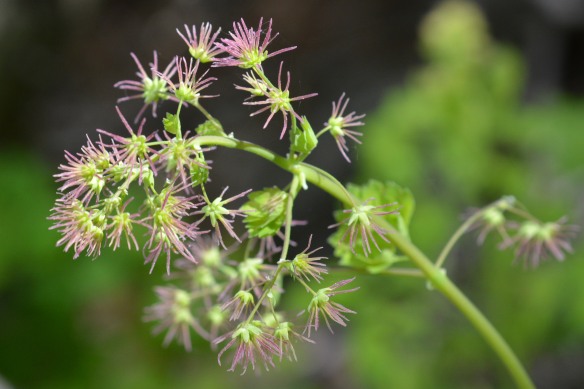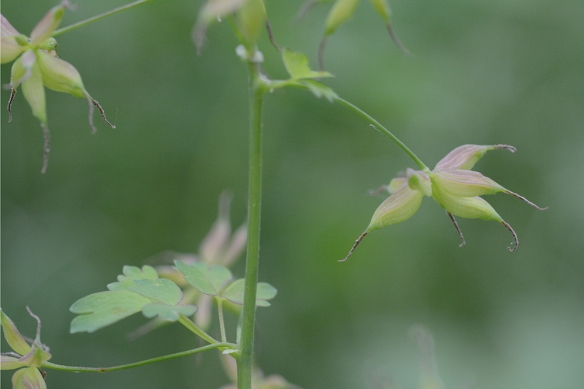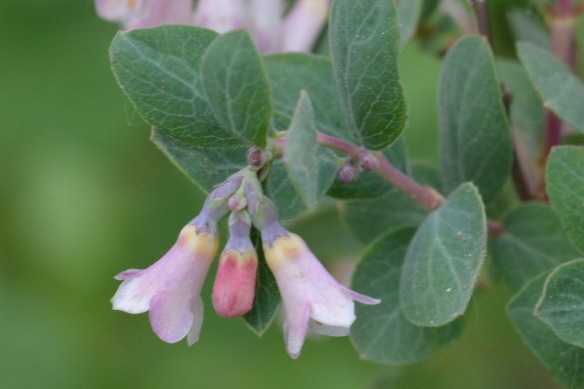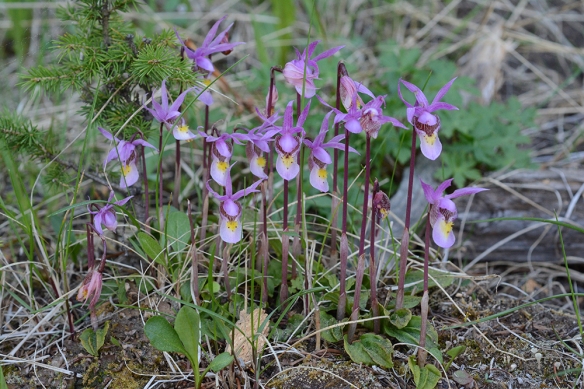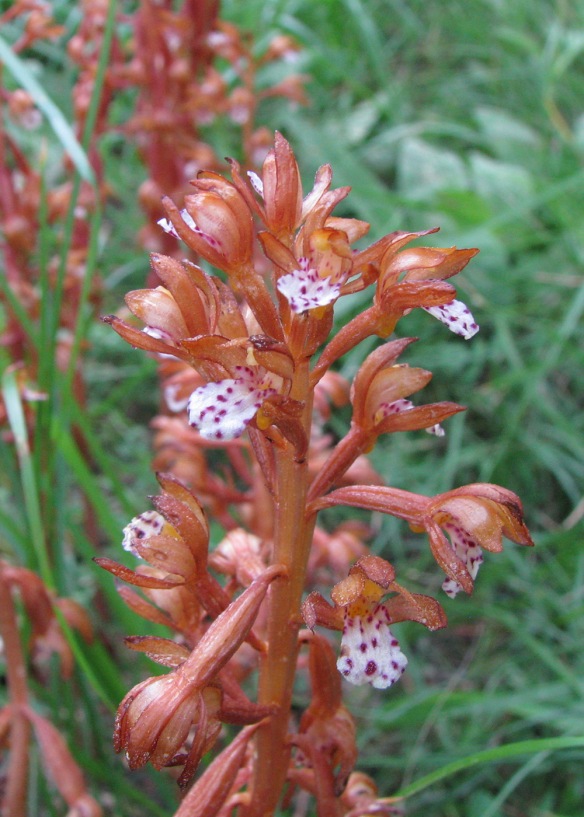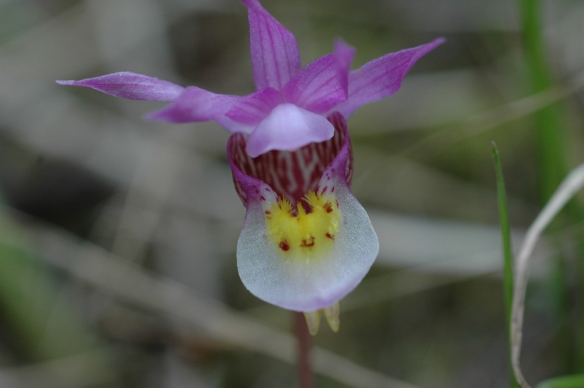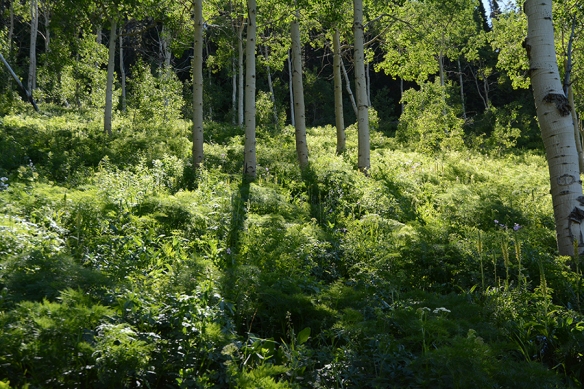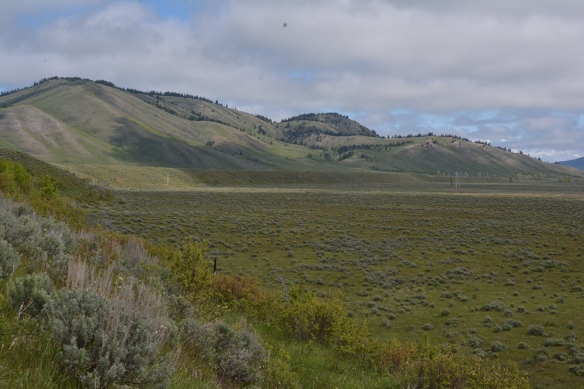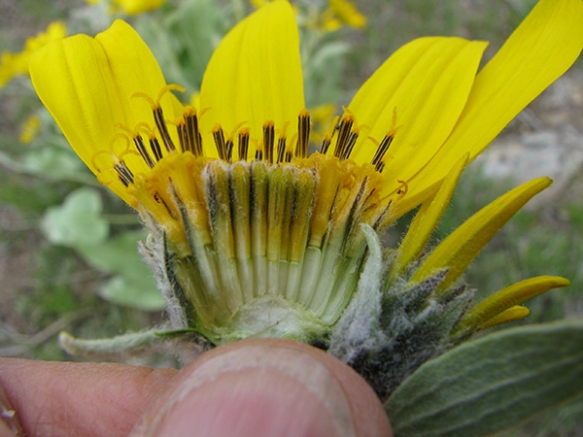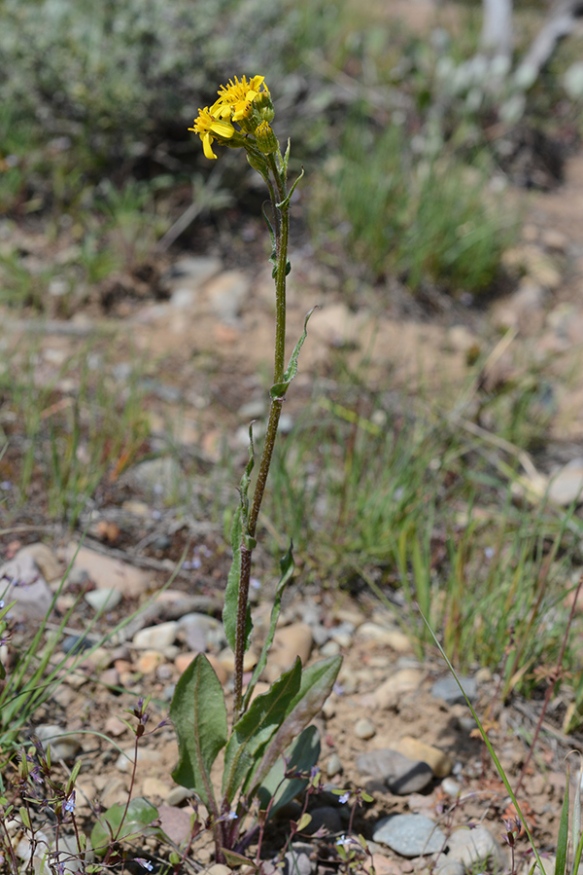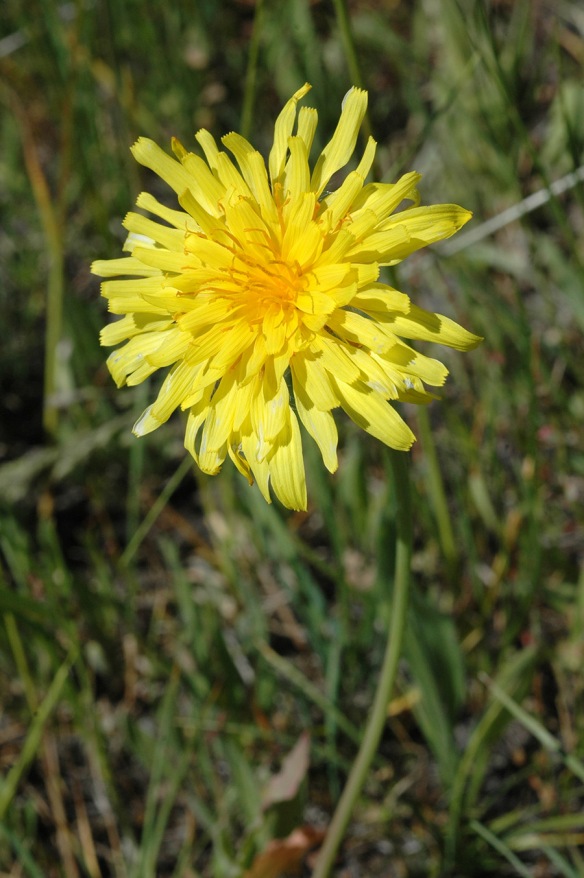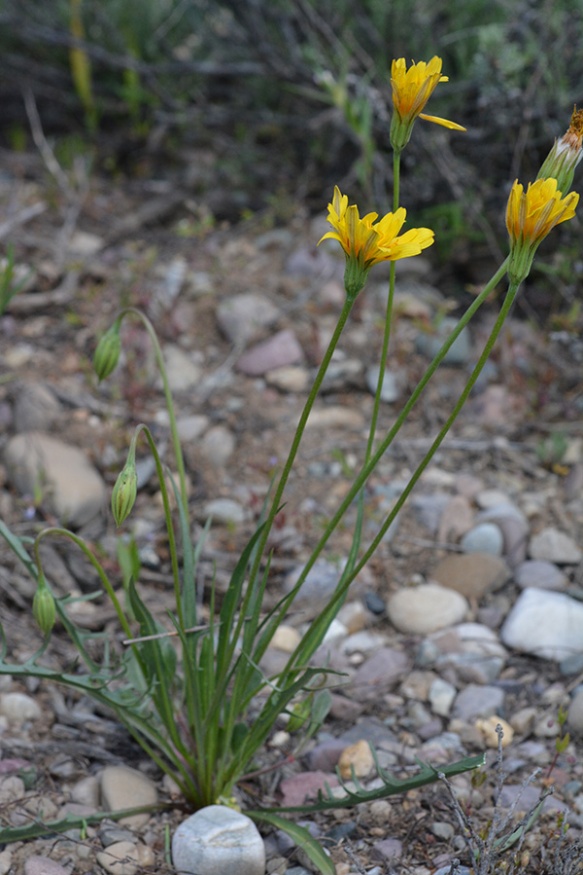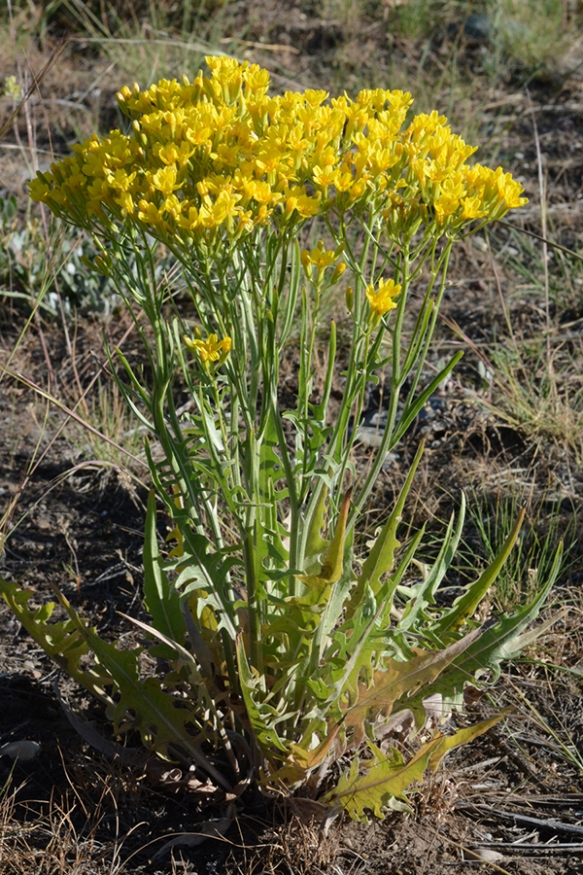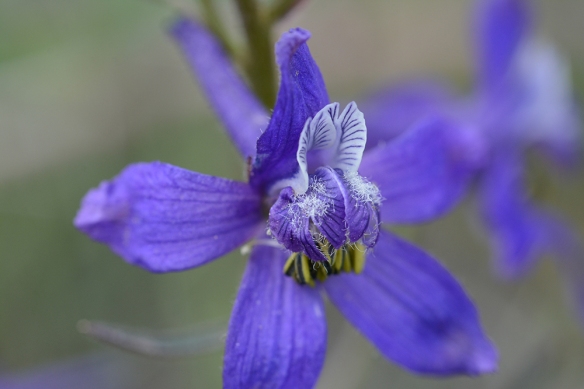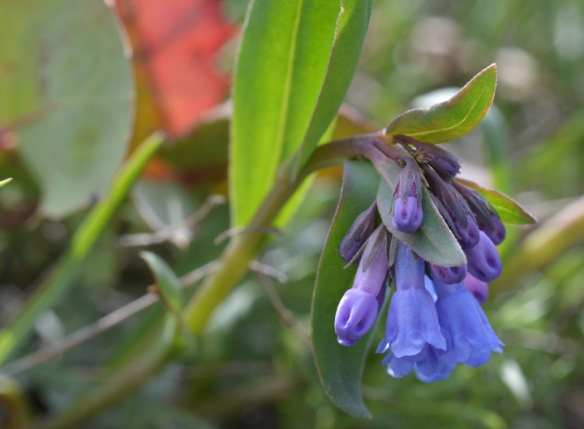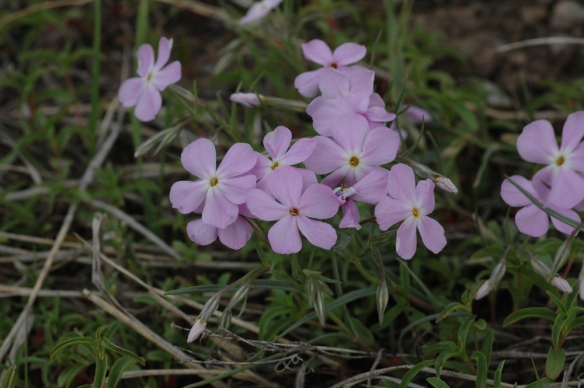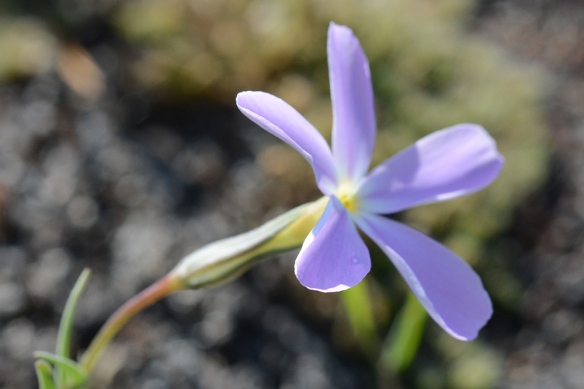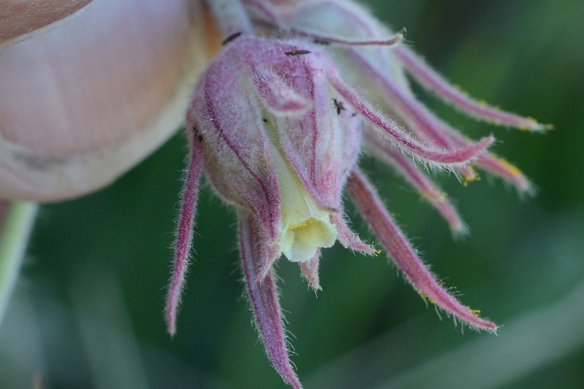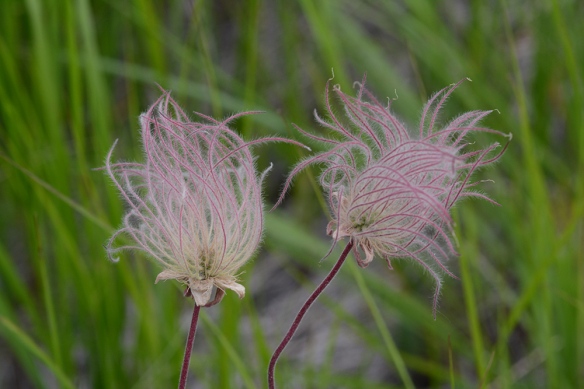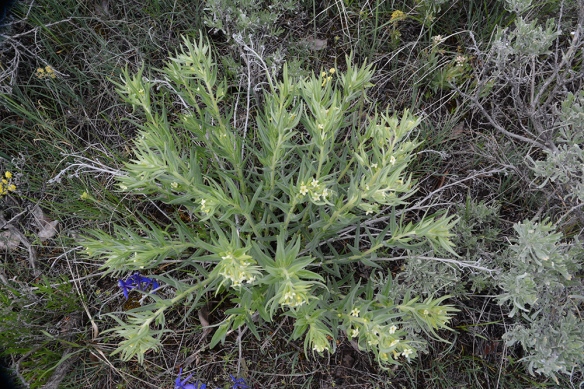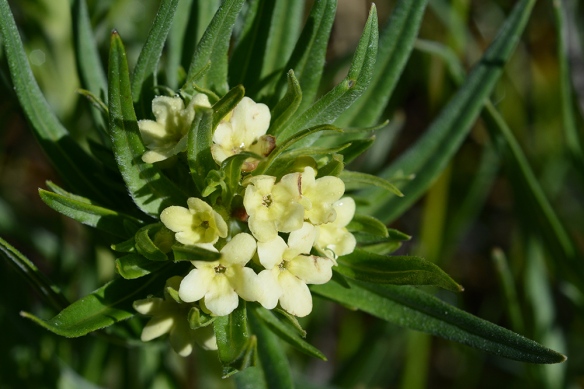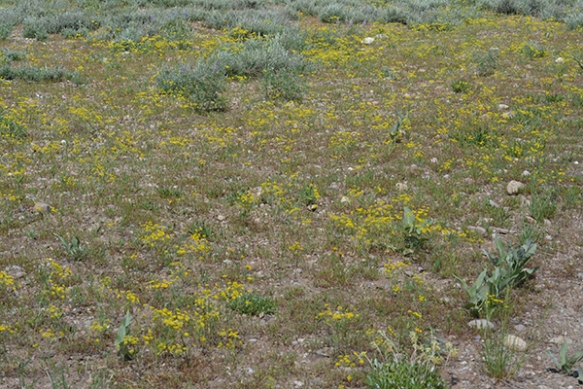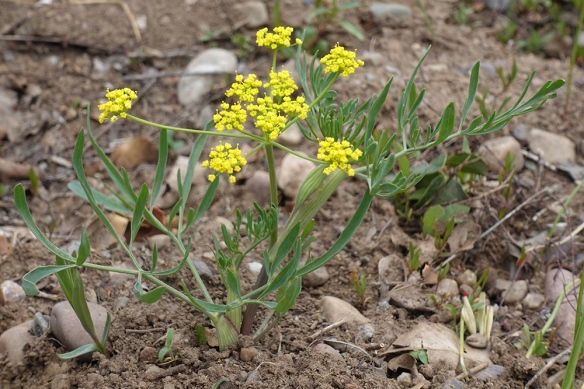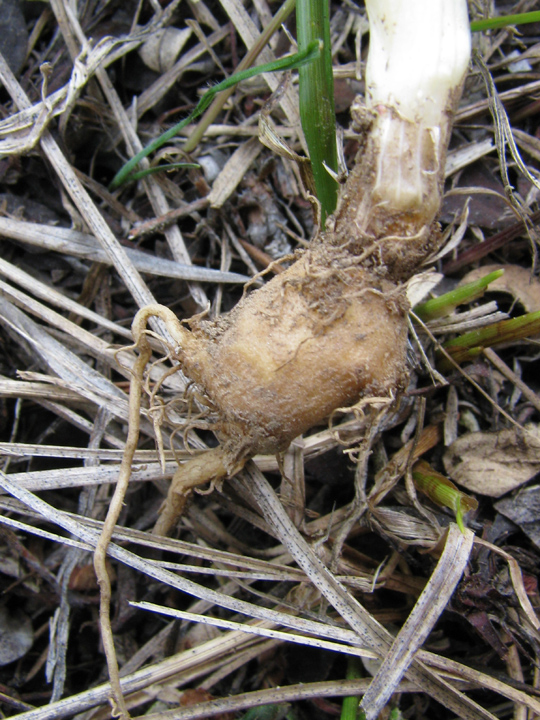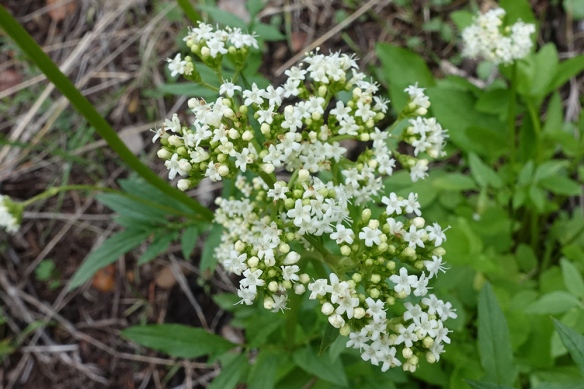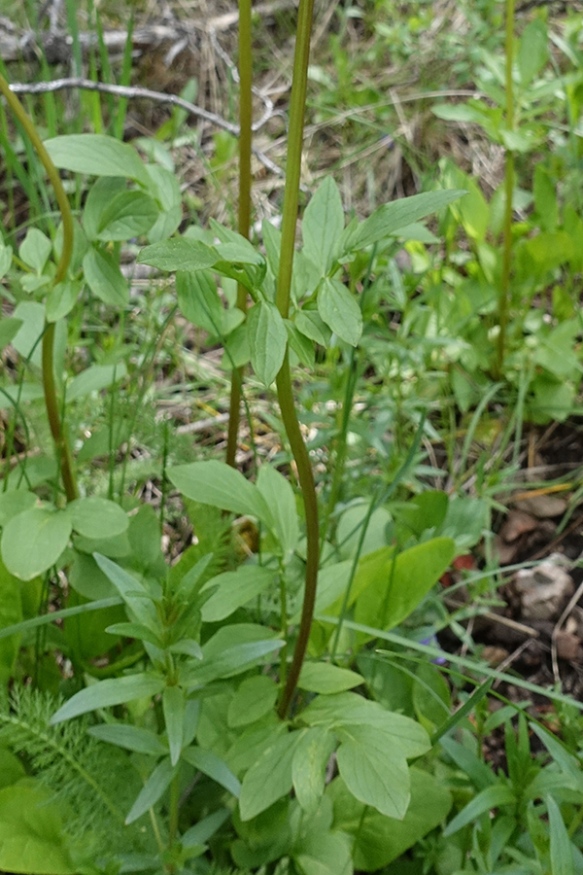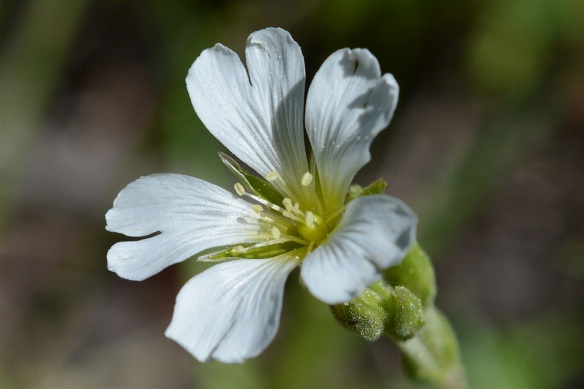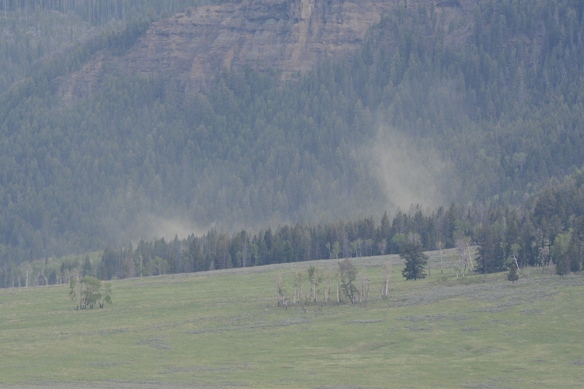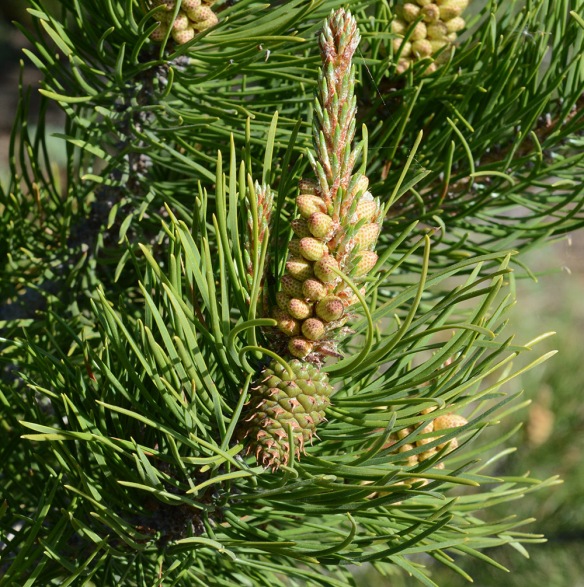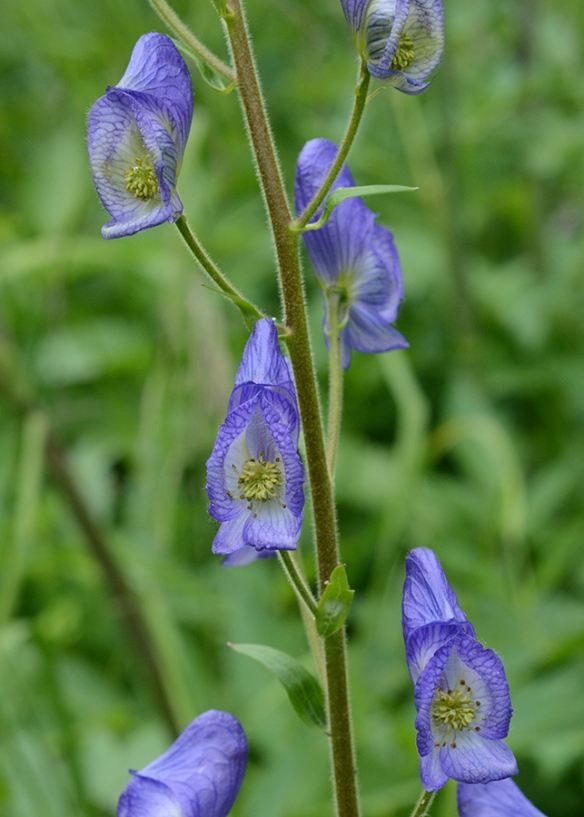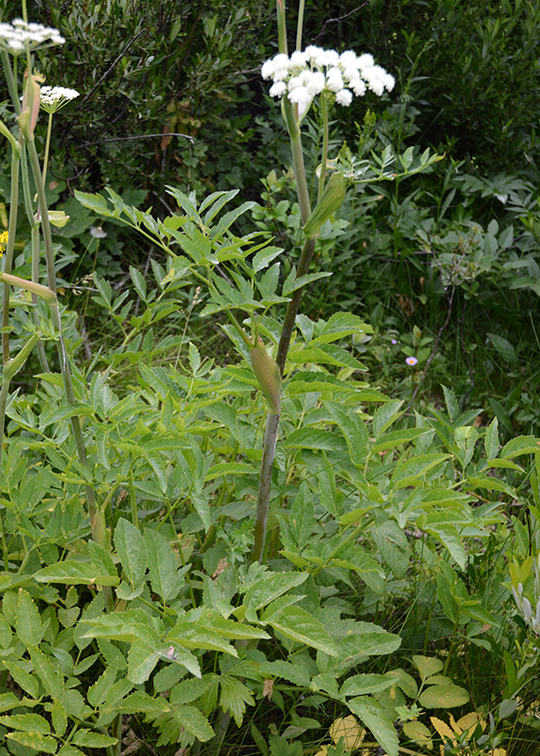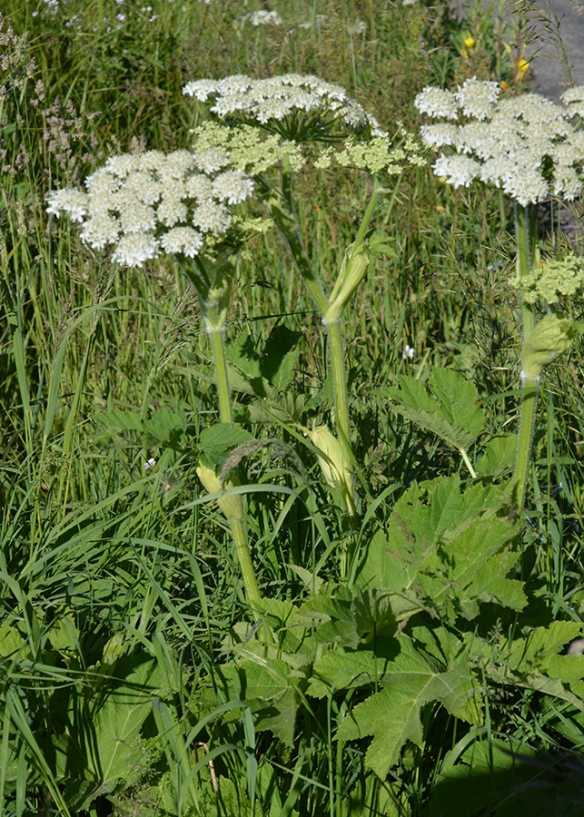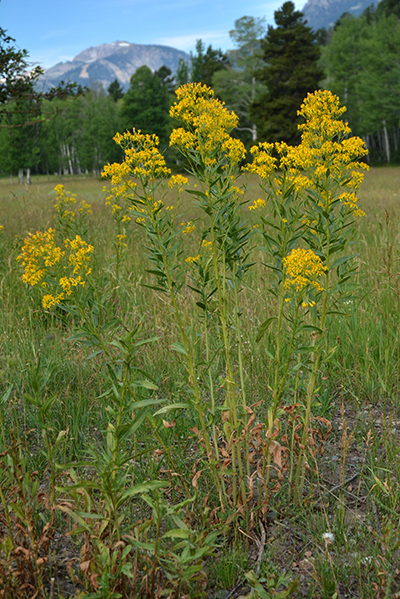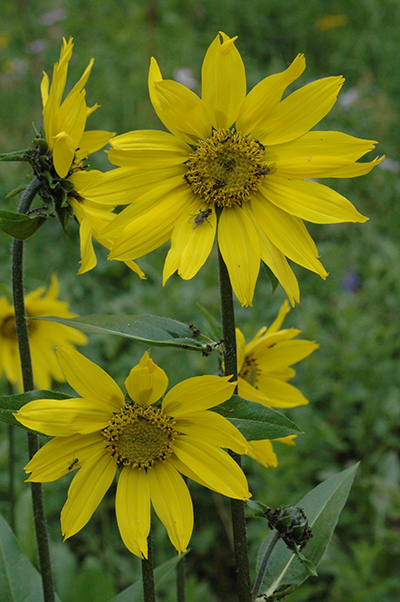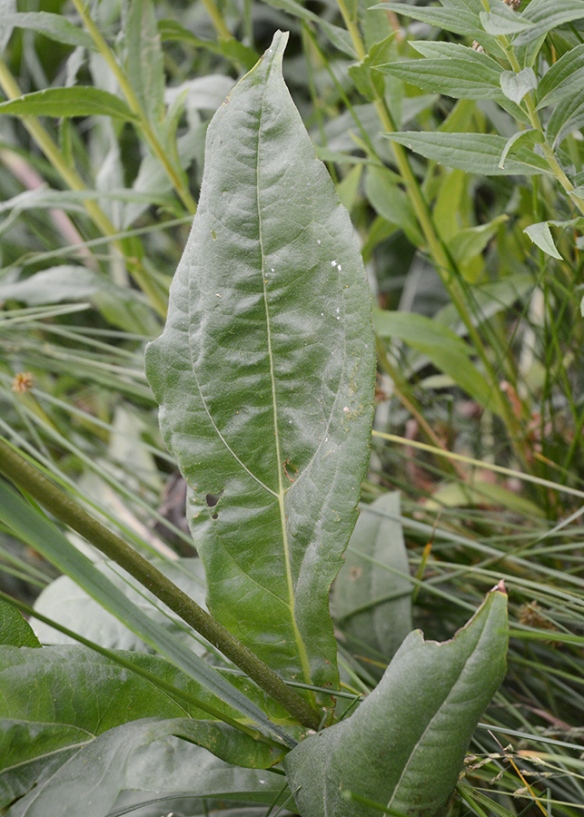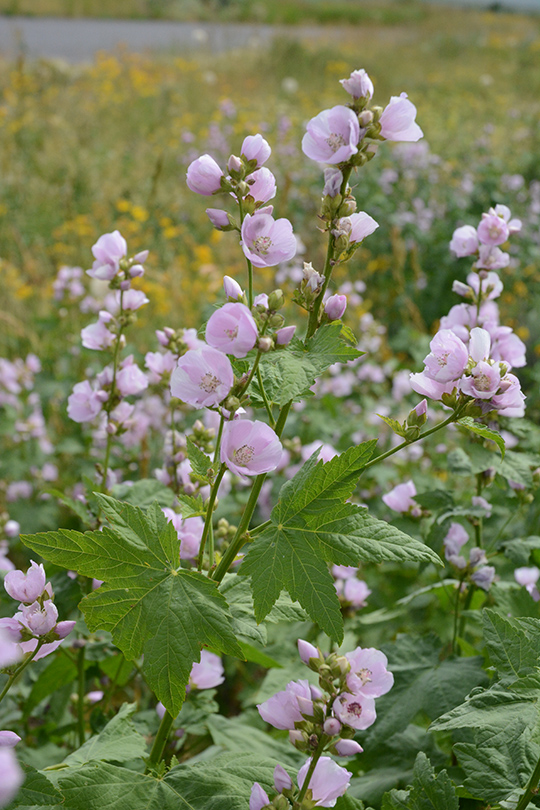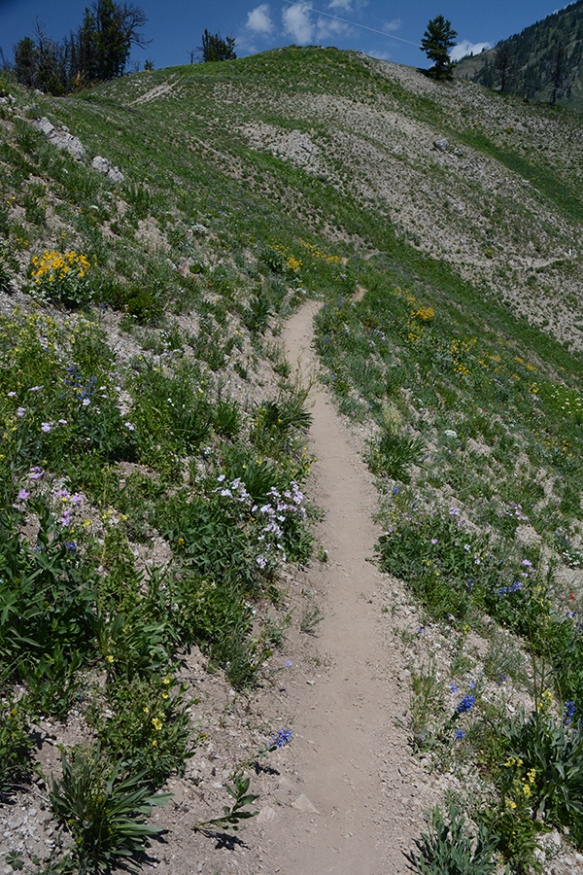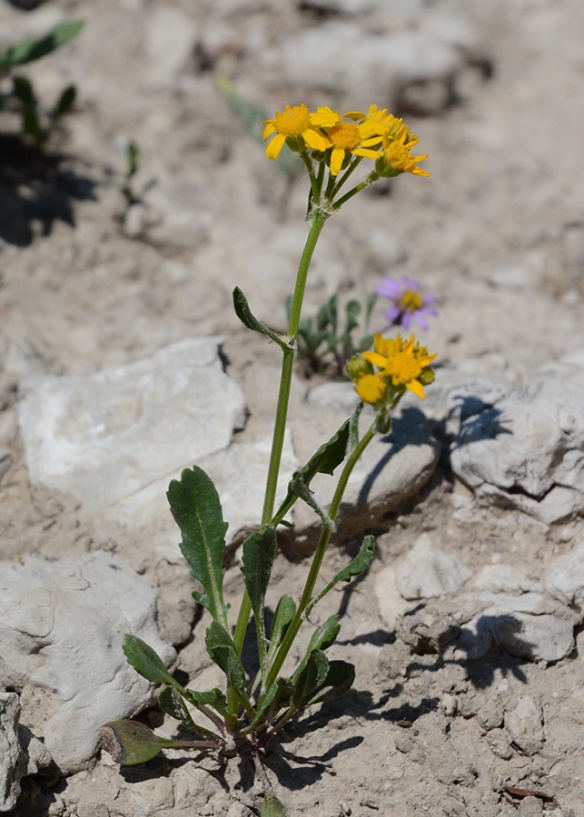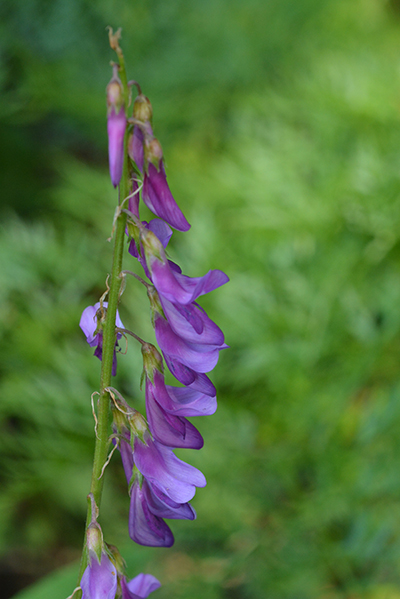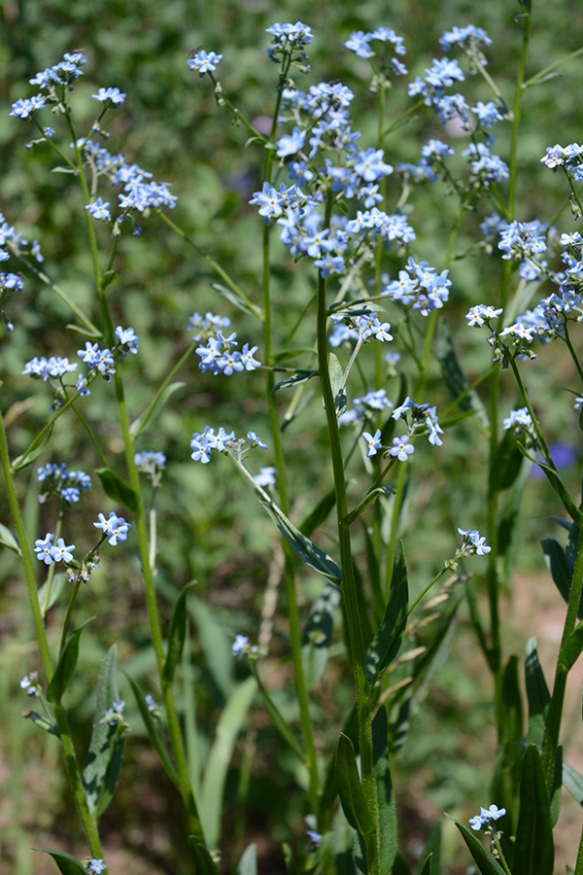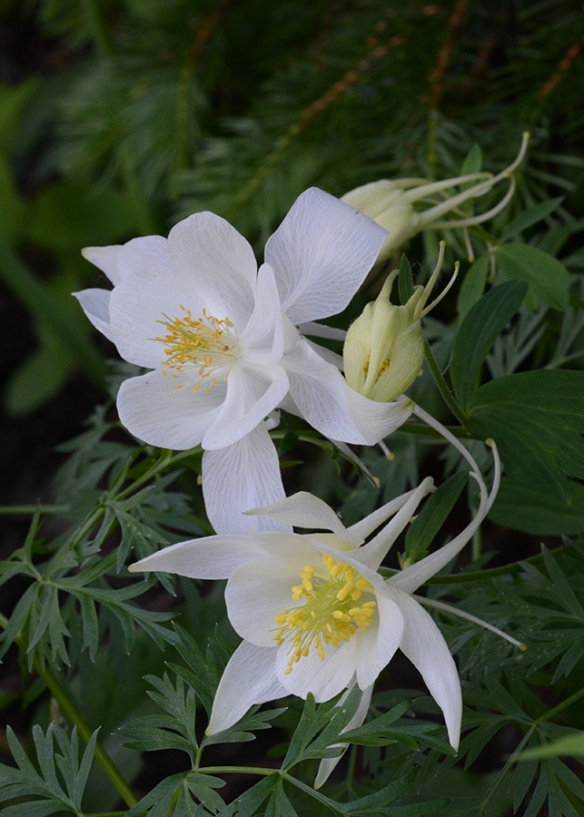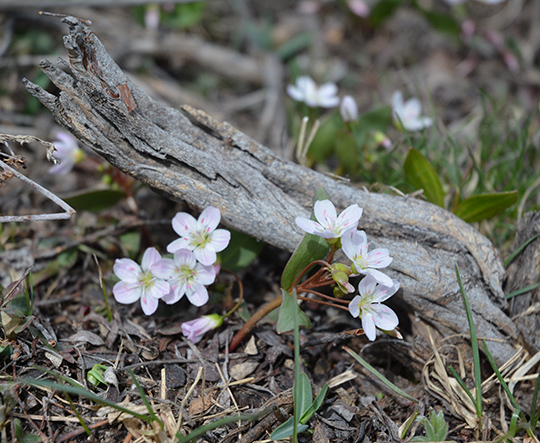Hike high for the reward of fields of flowers.  Wildflowers are blooming strong at elevations between 8,500-10,000,’ such as Mt. Ely, above Ski Lake, Rendezvous Mountain, and other subalpine habitats of the Grand Tetons. You can find lupines, little sunflowers, geraniums, stonecrops, milfoil, mountain dandelions, and mountain bluebells that we observed at lower elevations a few weeks ago, along with new flowers found only at these higher elevations.
Wildflowers are blooming strong at elevations between 8,500-10,000,’ such as Mt. Ely, above Ski Lake, Rendezvous Mountain, and other subalpine habitats of the Grand Tetons. You can find lupines, little sunflowers, geraniums, stonecrops, milfoil, mountain dandelions, and mountain bluebells that we observed at lower elevations a few weeks ago, along with new flowers found only at these higher elevations.
Where to Look
Topography makes a difference as to the lushness of flowers. How the mountains collected snow over the winter and how fast it has melted is determined in large part by the shape of the land, as well as its aspect: which way the slope is facing.
Steep south-facing slopes and high ridge lines have less snow to begin with and face the hot sun. Their flowers may be past bloom or be different species, as is seen south of Mt. Ely: Wyoming Paintbrush, Sedum, Milfoils, and Harebells are still blooming. North facing, bowl-shaped terrain—Cody Bowl and the bowl above Ski Lake–captures more snow and holds it longer. Lupines and Sulphur Paintbrush grow luxuriantly.
North facing, bowl-shaped terrain—Cody Bowl and the bowl above Ski Lake–captures more snow and holds it longer. Lupines and Sulphur Paintbrush grow luxuriantly. Areas of recently melted snow and streams coming down the north side of Rendezvous Mountain still have Mountain Bluebells and Fernleaf Lovage.
Areas of recently melted snow and streams coming down the north side of Rendezvous Mountain still have Mountain Bluebells and Fernleaf Lovage.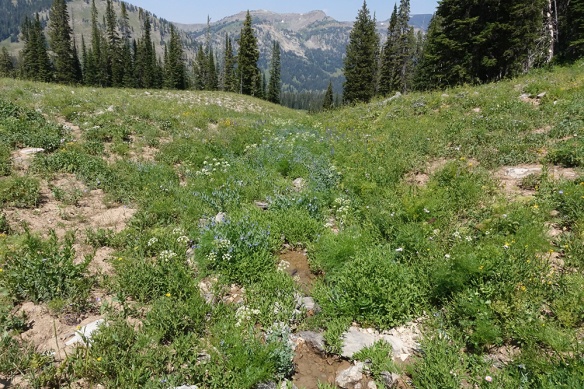 Jackson Hole receives little predictable rain in summer—typically from spotty, if often intense, thunderstorms–so snow in winter is the main source of moisture for the growing season.
Jackson Hole receives little predictable rain in summer—typically from spotty, if often intense, thunderstorms–so snow in winter is the main source of moisture for the growing season.
Below are some freshly flowering species frequently seen at high elevations later in the growing season.
Blue Composites Keep on Coming
The Daisy, Aster, or Sunflower Family—technically Asteraceae—flourishes. Traditionally, this large group has been called “composites” because each “flower” is in fact a “head” of many flowers on a platform. Individual flowers may be “ray”flowers—which look like petals or the rays of sun, and/or “disk” flowers, which are small flowers usually in the center. Each flower head is surrounded by protective, usually green “bracts.” These bracts help in separating out the different genera. Below are pictures of bracts!
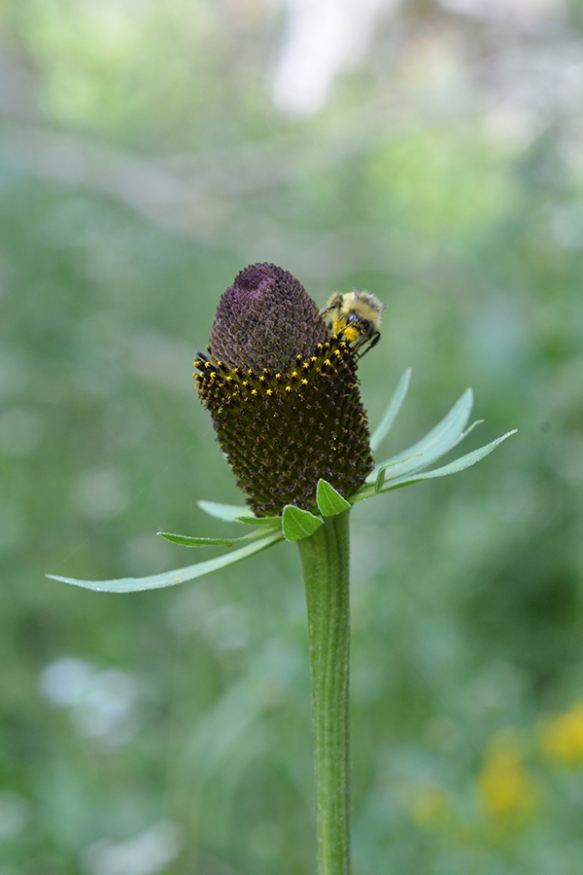
Western Coneflower – Rudbeckia occidentale – is one of many composites which attract a range of pollinators. Here the tiny disk flowers attract bee pollinators. It flowers from bottom to top. The bracts form a green whorl around the base.
Showy composite flowers attract different pollinators. At this time of year butterflies – particularly Fritillary – find room to land and sip nectar from the cups of disk flowers. Flies and bees also poke and prod about the flower heads. Observing pollinators adds a new dimension to understanding the ecology of flowers and insects.
Fleabanes or Daisies – Erigeron spp – (people use the names interchangeably) look like asters; however, their “involucral bracts” that encompass the heads of the composite flowers are more or less even in length and are arranged in only one, maybe two, rows like a palisade fence. Often, their ray flowers are thinner and more plentiful than in asters.
Two large fleabanes/daisies are in bloom right now:
Oregon Daisy – Erigeron speciosus -is frequent at lower elevations and very showy now at higher elevations. They grow to 1-2.5’ high, with elliptical leaves alternating up the stem to a cluster of purple flower heads.

Like other fleabanes, the large blue Oregon Fleabane has many petals (actually ray flowers) and many thin bracts arranged like a palisade fence protecting the many flowers of the head.

Oregon Daisy or Fleabane has many blue or lavender ray flowers and a large center of yellow disk flowers.
Subalpine Daisy – Erigeron peregrinus – is a bit smaller than Oregon Daisy and is limited to higher elevations. It also has many oval to elliptical leaves up the stem, but the lavender ray flowers are broader and fewer than in Oregon Daisy.
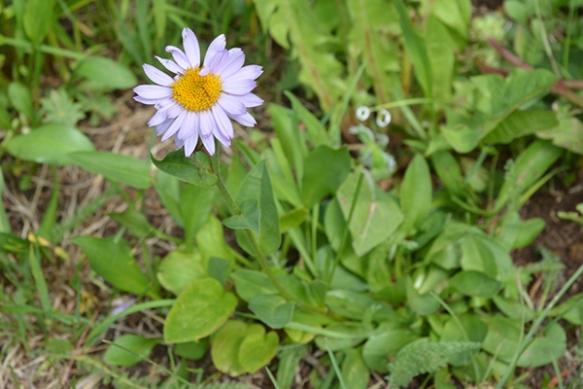
Single heads with broad blue ray flowers are typical of Subalpine Daisy – Erigeron peregrinus.
Another look-alike, Alpine Leafy-bract Aster – Symphiotrichum foliaceum – has a similar color and many relatively broad ray flowers. However, looking at the bracts beneath, you will see they are green and leafy looking. As the name indicates, these are also typically at high elevations.
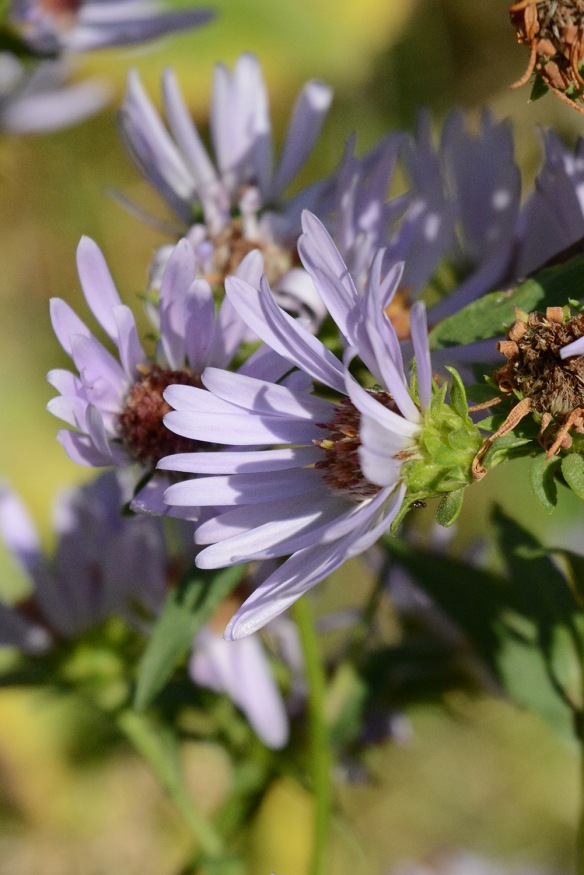
In Alpine Leafy-bract Aster the bracts are loose, leaf-like shingles encircling the head.
Thickstem Aster – Eurybia integrifolius – is about the same size as those species above. The thick, slightly zigzag stems are sticky hairy all the way up to the flower heads. Flowers have a few deep-violet ray flowers. The sticky bracts splay outwards. They grow at higher and lower elevations in meadows.
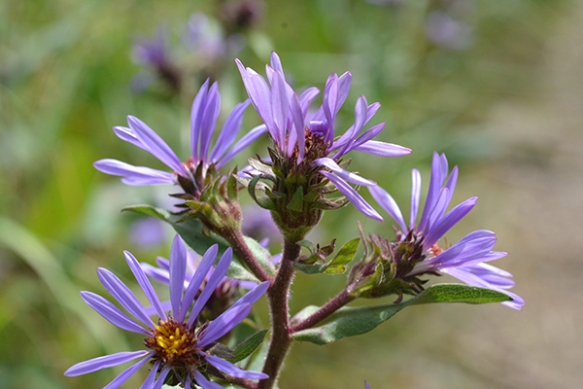
The stems of Thickstem Aster are not only thick, but also sticky.
Englemann (Chaffy) Aster – Eucephalus engelmannii – stands tall to 3-4’. Unbranching stems are clad in large elliptical leaves alternating up the stem, with showy sprays of white flower heads near the top. White ray flowers are relatively long and few compared to daisy fleabanes. Look under the flower heads at the arrangement of bracts: they look like pointed shingles on a roof—one easy way to distinguish asters from fleabane daisies.
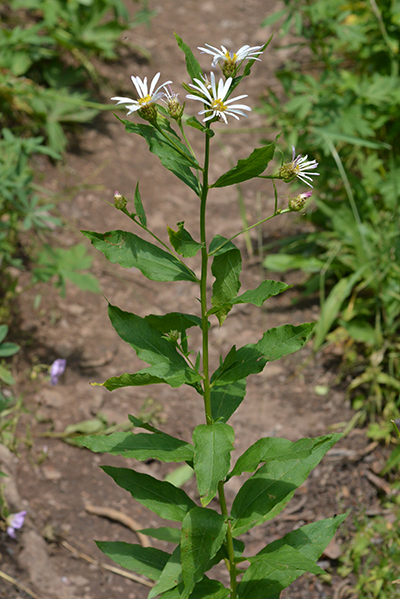
Engelmann Aster stands tall on single stems with a few white flowers at the top. They can form large colonies in some areas.
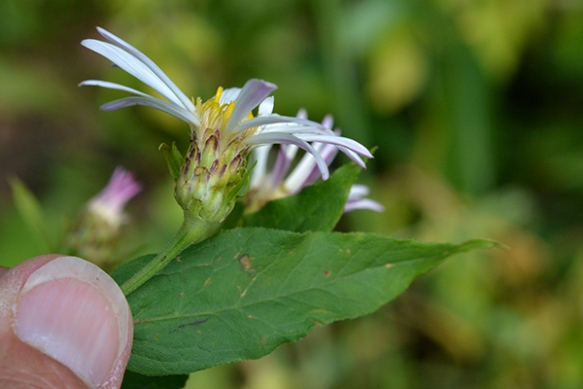
The shingled or “imbricate” bracts of Englemann Chaffy Aster – Eucephalus spp. – help separate it from Erigerons or fleabane daisies. The rounded bracts are in several rows that overlap.
Nuttall Aster – Eucephalus elegans – is shorter than its cousin, but it too has the shingled effect of the bracts. The flowers are a lovely violet blue. This species is just coming into bloom and more sporadic in its appearance.
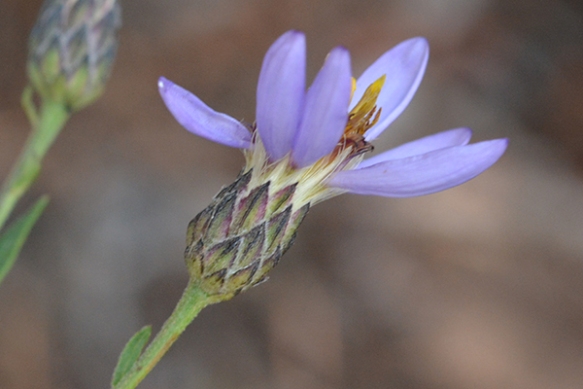
Nuttall Aster – Eucephalus elegans – has truly elegant bracts.
A third species Blue-leaf Aster – Eucephalus glaucus – has distinctly bluish leaves and grows in 1-2’ tall sprawling, rhizomatous patches. Flowers are light lavender.
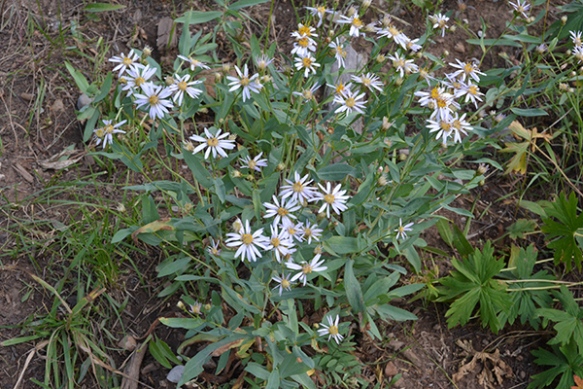
Blue-leaf Aster has a ghostly appearance.
Spiny-bracted Aster/Hoary Tansy Aster – Machaeranthera canescens – grows on much drier slopes, such as along Teton Pass. Rarely a foot tall, the plants have relatively few stems, with few leaves. The violet flowers catch the eye. Look for the spine-tipped, outward-arching bracts surrounding the flower head.

Spiny Aster – Machaeranthera canescens – grows sparsely along the trail south of Teton Pass.

The bracts around this violet head point outward and are sharp, giving Spiny Aster its name.
A Few Yellow Composites
Thickstem Groundsel – Senecio crassulus – is adapted to a variety of moist to dry meadows, varying its height according to level of moisture – taller to 3’ with more water, or stunted at 8” or less. The slightly succulent, elliptical leaves may be toothed. The lower ones are stalked, the upper sessile. The shiny green bracts are neatly aligned in one row and are black tipped. A few ray flowers surround the yellow disk flowers.
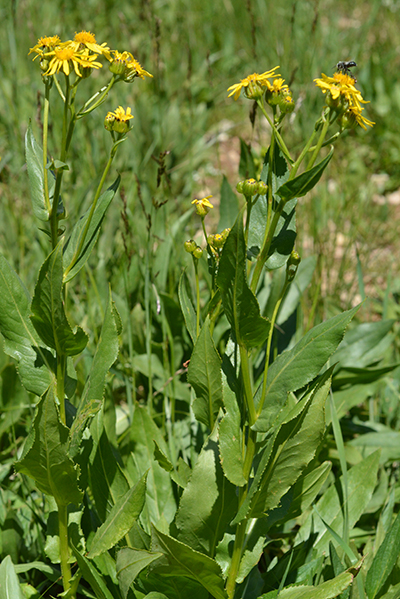
Thickstem Groundsel varies in height depending on underlying moisture. Leaves are sessile to clasping the stem and toothed.
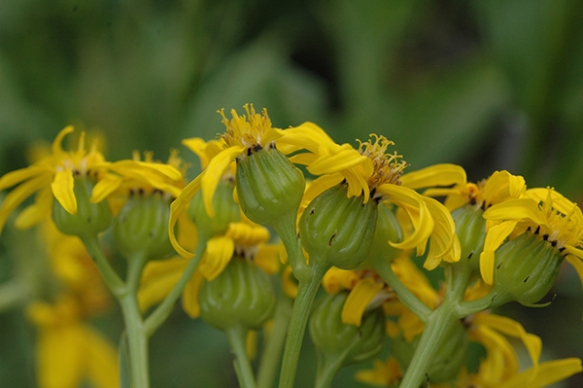
Groundsels have a single row of even-sized bracts surrounding the flower heads, often with black tips. This is Thick-leaved Groundsel. Note the disk flowers are in full bloom. You can see the female stigmas arching outward.
Low Goldenrod – Solidago multiradiata – is common in rock edges and along trails at many elevations. The tiny flower heads have about 13 ray flowers each and the heads are held in clusters mostly near the top of 6-12″ stems. To distinguish this species from look-alikes, find the ciliate – stiff hairy – margins to the elongate leaves at the base of the plants.
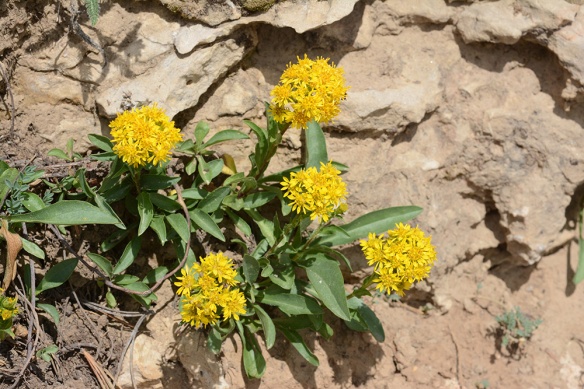
Low Goldenrod has about 13 tiny yellow ray flowers per head. Flowers heads are clustered together.

The lower leaves of Low Goldenrod have stiff hairs on their petioles, which is very helpful in identification.
Paintbrush Complex
 Paintbrushes are intriguing and confusing members of the Orobanche or Broomrape Family (formerly placed the Figwort or Schropulariaceae Family). Species in the genus Castilleja have unique attachments to other plant species, depending more or less on their hosts for extra carbon, water, nutrients and even chemical defenses. As such, they are termed hemiparasites. They can survive on their own but grow larger, produce more flowers and seeds, and have less predation if they attach to their host’s roots using special haustorium. Plant hosts include grasses, sagebrush, lupines, and larkspurs.
Paintbrushes are intriguing and confusing members of the Orobanche or Broomrape Family (formerly placed the Figwort or Schropulariaceae Family). Species in the genus Castilleja have unique attachments to other plant species, depending more or less on their hosts for extra carbon, water, nutrients and even chemical defenses. As such, they are termed hemiparasites. They can survive on their own but grow larger, produce more flowers and seeds, and have less predation if they attach to their host’s roots using special haustorium. Plant hosts include grasses, sagebrush, lupines, and larkspurs.
Paintbrushes have wide variation in color and shape due to polyploidy and hybridization. For identification pay attention to the shape of the leaves and shape and color of bracts–colored leaf-like appendages below each flower. In paintbrushes, sepals are fused to form a lobed tube and are colorful like the bracts. The petals are relatively inconspicuous. They are fused to form a tube called a galea which hides and protects the stamens and stigma within.
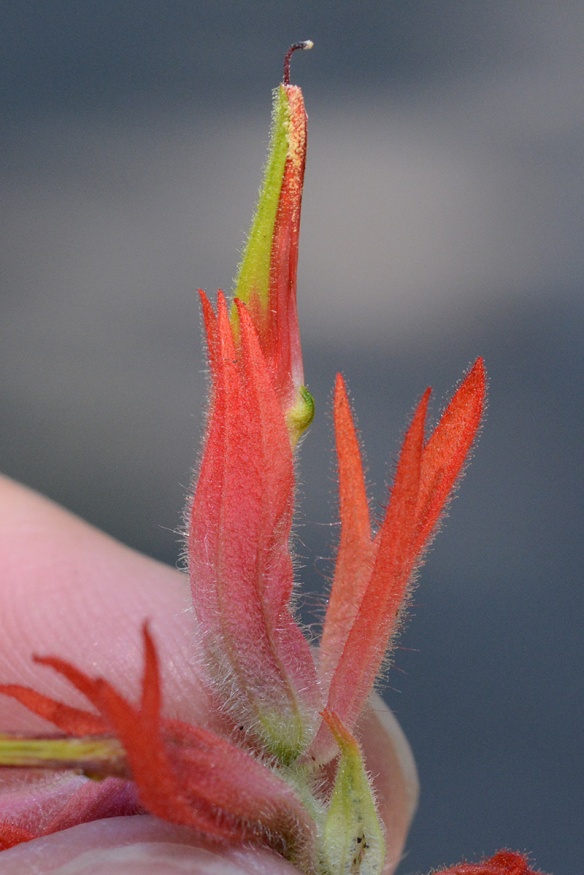
Paintbrush flowers have a colorful bract (shown to right) under each flower. Each flower (center) has a colorful calyx tube which is lobed. It surrounds the galea = tube of fused petals. The stigma and anthers are protected inside. Here the stigma sticks out from the top of the green and red galea.
Here are four species you can see up high right now. Hopefully the description and the photos will help you distinguish to species—never easy. Once identified you can find more information on their hosts and their predators.
Wyoming Indian Paintbrush – Castilleja liniarifolia – is the most angular of the species we see right now. Its bright red to orange calyx splits to the side and back but most deeply in front where the green galea extends way out. The bracts and leaves are also often deeply lobed and linear and widely spaced on the stem.
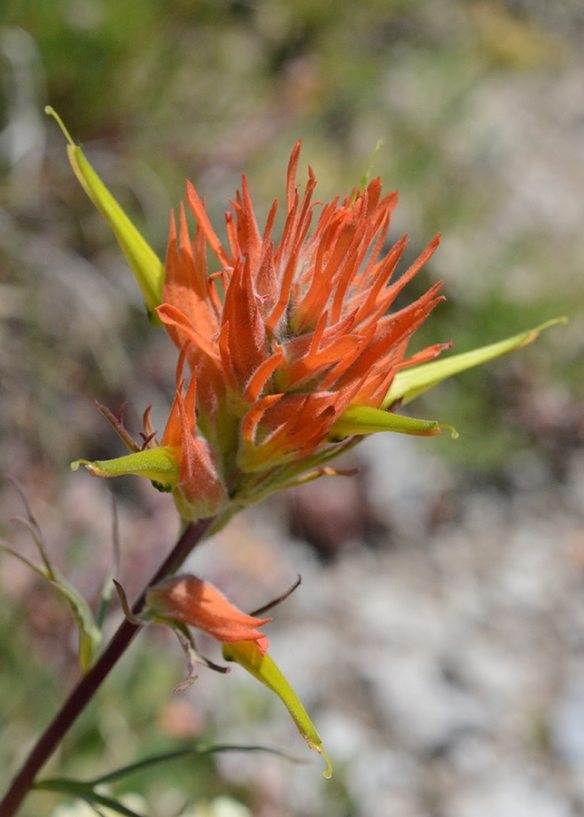
The state flower Wyoming Paintbrush – Castilleja liniariifolia – is found on dry slopes at all altitudes. It has a lean appearance to the plant, leaves, and flowers. They obtain up to 40% of their carbon from their host plant Big Sagebrush – Artemesia tridentata.
Scarlet Paintbrush – Castilleja miniata – is blooming at mid to subalpine elevations. It is common along the trail south of Teton Pass right now. It is often two feet tall and branching with wands of bright red flowers. The bracts and calyx are often lobed and sharply pointed. They cover the green corolla or petal tube (galea) which extends out when mature. Overall flower color ranges from red to scarlet to orange. This is our most wide ranging and variable species. Polyploidy and occasional hybridization with C. rhexifolia and C. sulphurea confound strict identification.
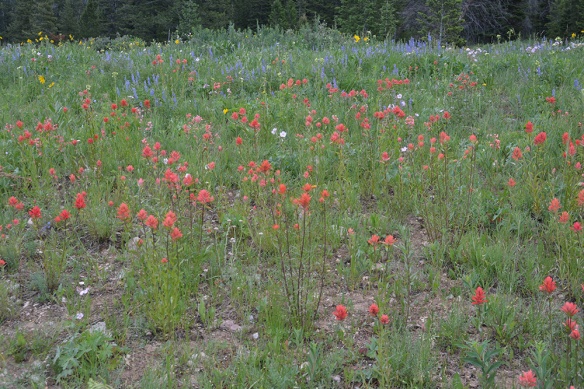
Scarlet Paintbrushes come in a range of colors. Most are tall and often branching.
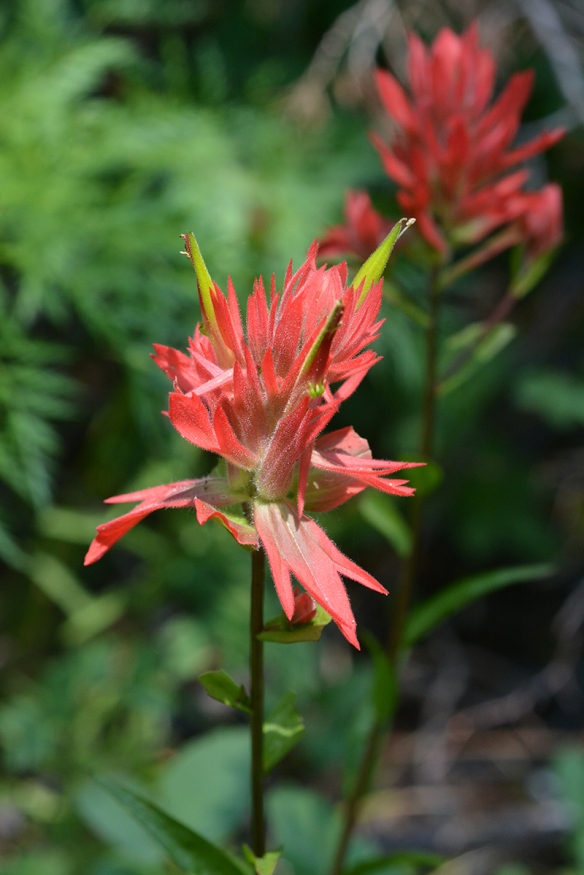
Tricky to ID due to hybridization and genetic polyploidy, this photo of Scarlet Paintbrush – Castilleja miniata – shows the bracts with sharp pointed lobes as well as a relatively sharply lobed, fused calyx. The green galea protrudes revealing the stigma. Research has shown that all parts of the plant and flower except the galea and nectar have poisonous alkaloids when connected to its host Lupine – Lupinus argenteus. The alkaloids deter herbivory.
Alpine or Rosy Paintbrush – Castilleja rhexifolia – puzzles me often, especially in comparison to Scarlet Paintbrush. References say they are crimson, rose-red to pink. Bracts are relatively broad and rarely lobed. Calyx lobes are relatively blunt. Often the parts are quite hairy. Plants are typically about one foot or less and rarely branch. They grow only at high elevations.
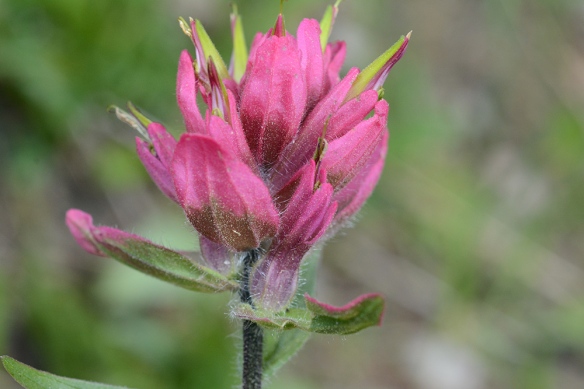
Rosy Paintbrush – Castilleja rhexifolia – has relatively broad bracts, often hairy, and the lobes of the calyx are blunt. They are host plants for an elegant looking plume moth – Amblytidia pica – look it up!
Sulphur Paintbrush – Castilleja sulphurea – Although yellow, this species is very similar and closely related to Rosy Paintbrush – C. rhexifolia. Look for broad, only slightly lobed, colorful bracts. The bracts and calyx lobes are rounded, not sharp. It is also sticky hairy. Look for larkspurs and lupines nearby. Sulphur paintbrushes are often connected, obtaining carbohydrates and alkaloids from their hosts.
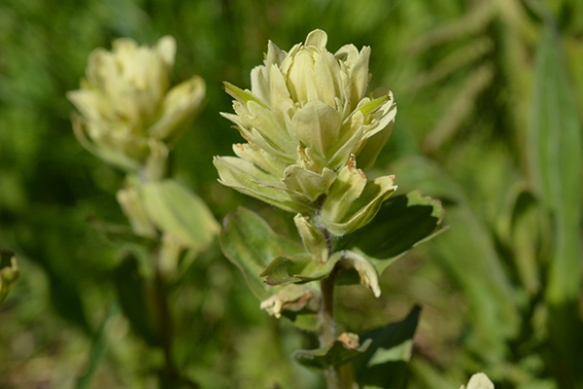
Sulphur Paintbrush is similar in flower form to C. rhexifolia with wider bracts and rounded lobes. It grows at high elevations as well. They can hybridize.
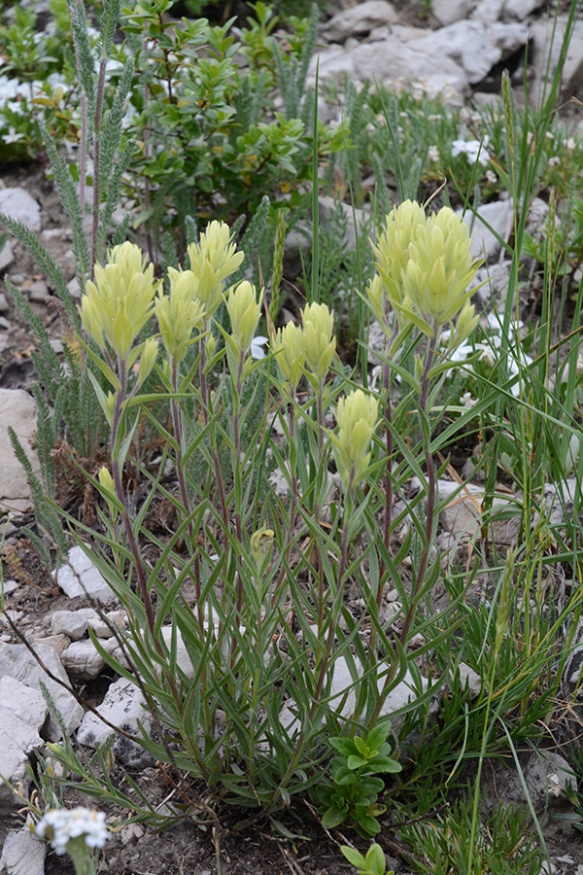
Sulphur Paintbrush can have many stems. It is a hemiparasite on Tall Larkspur – Delphinium occidentale – and Lupine.
Hosts Plants of Paintbrushes
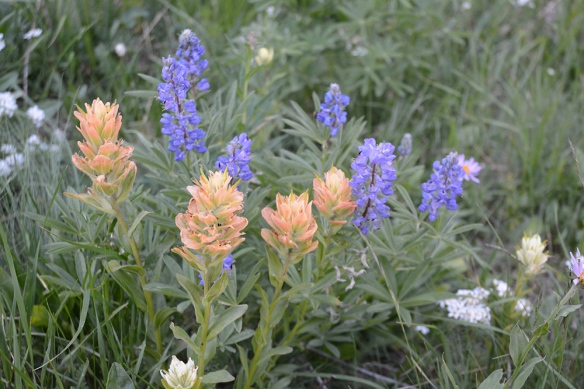
Silvery Lupine – Lupine argenteus var. depressus – above Ski Lake serves as a host plant to a hybrid paintbrush.
Lupine – Lupinus argenteus – is a proven host plant of several species of paintbrush. Lupine is a source of carbon, water, and nutrients. It also provides a toxic alkaloid which helps protect the paintbrush from herbivory, such as from larvae of the plume moth – Amblyptilia pica. This chemical defense in not found in the petals or nectar of paintbrushes, therefore, allowing their pollinators, such as broad tailed and rufous hummingbirds to proceed unharmed.
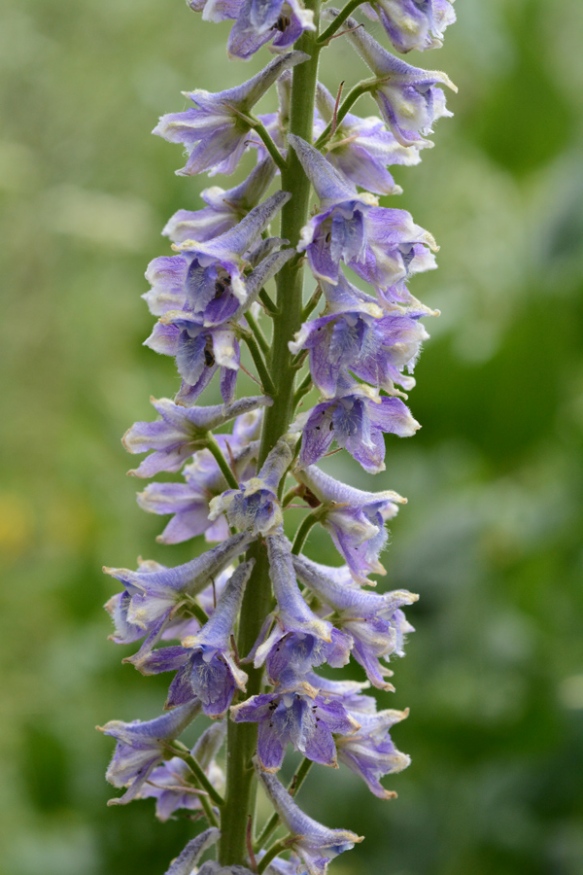
Tall Larkspur – Delphinium occidentale – is a host plant for Sulphur Paintbrush.
Two Creamy, Coiled Louseworts
Louseworts are also in the Orobanche or Broomrape Family. They have highly evolved flowers. Bumblebees pollinators just fit amidst the lower lip and upper coil. The stigma, protected by the upper petal, sticks out when ready and tags the pollen from where the bees can’t glean it. Flowers contain no nectar reward.
Louseworts, like their relatives paintbrushes, also have hemiparasitic relationships with nearby host plants.
Parrot’s Beak – Pedicularis racemosa – grows 8-20” high. The leaves are lance-shaped with small teeth and are arrayed up the stem. The lower lip of the flowers is three lobed, and the upper lip is arched into a beak.
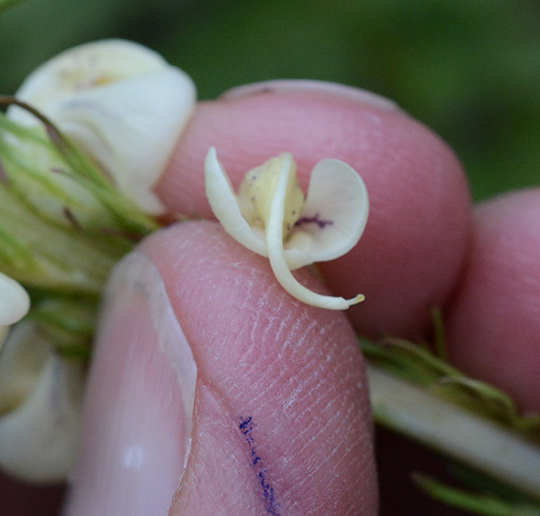
Parrot’s Beak has evolved to fit their pollinators perfectly: Bumblebees This coiled flower is designed to wrap around the bee and tag the pollen on its back. Looks a bit like an elephant trunk!

Parrot’s Beak has linear, finely toothed leaves. At high elevations leaves can be reddish. Pedicularis racemosa has been discovered to be an alternate host to white pine blister rust, a non-native fungus devastating 5-needled pines such as White-bark and Limber pines. Parrot’s Beak is a hemiparasite on lupines.
White-coiled Lousewort – Pedicularis contorta – looks very similar to Parrot’s Beak but the leaves grow mostly from the base and are deeply, pinnately lobed.
White-coiled Lousewort is a higher elevation species with leaves mostly near the base.
Leaves of White-coiled Lousewort are pinnately divided or lobed.
A Few More Subalpine Specialties
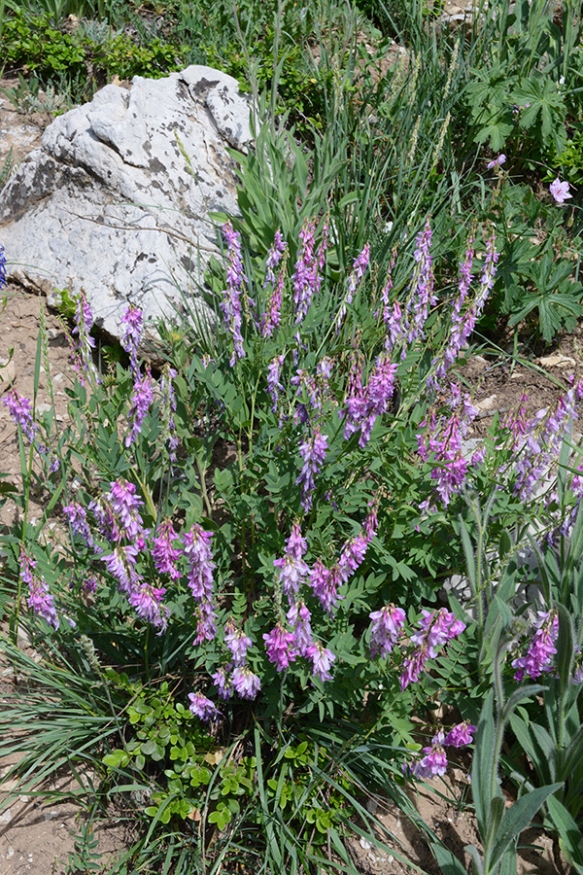
Splashes of lavender purple on subalpine meadow hillsides are likely Western Sweetvetch – Hedysarum occidentale. Look for the pea-like flowers, and later dangling flattened pea pods or loments.

Related to phlox, Nuttall’s Gilia – Leptosiphon nutallii – forms soft mounds on rocky slopes. The leaves are almost needle-like and form whorls on the stem. Flowers are fading on Teton Pass but still flowering on Rendezvous Mountain.
Found often in shade or meadows where snow melts late at high elevations, Mountain Bog Gentian – Gentiana calycosa – is a treat to find. Leaves are egg-shaped and paired up the 5-12” stems. Flowers are deep blue and are decorated to direct pollinators deep.
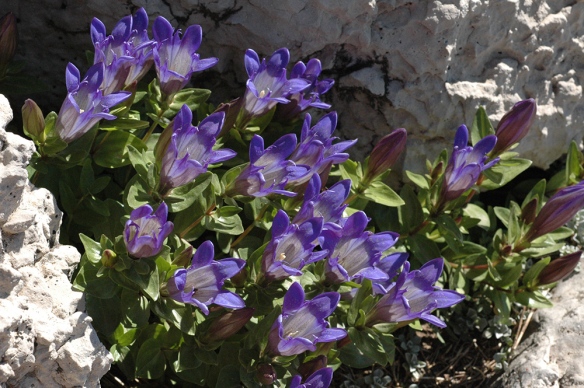
Mountain Bog Gentians appear out of rocks and shady moist crevices in subalpine zones.

Mountain Bog Gentian has spots and lines to lure insects deep inside.
Many other flowers are blooming high. Go in search! Let us know what you find at tetonplants@gmail.com.
Frances Clark, Wilson, WY
July 31, 2016, update Aug. 2 after hiking down from Rendezvous Mountain via Granite Canyon.
Note: What we once called “asters” and were in the Aster genus have been sorted by scientists into many new genera: Eucephalus, Eurybia, Symphiotrichum, Oreostemma, etc. However, the common name of “aster” remains attached to many. Indeed “Aster” is much easier to remember than the new scientific names. If you are frustrated by all this, just enjoy looking at the remarkable, if confounding, variation of this group of composites.

 wildflowers you may see hiking or driving throughout Jackson Hole. Enjoy skimming through the photos for their names. And if you have a moment, read the captions to find out a quick fact you can share with a friend.
wildflowers you may see hiking or driving throughout Jackson Hole. Enjoy skimming through the photos for their names. And if you have a moment, read the captions to find out a quick fact you can share with a friend.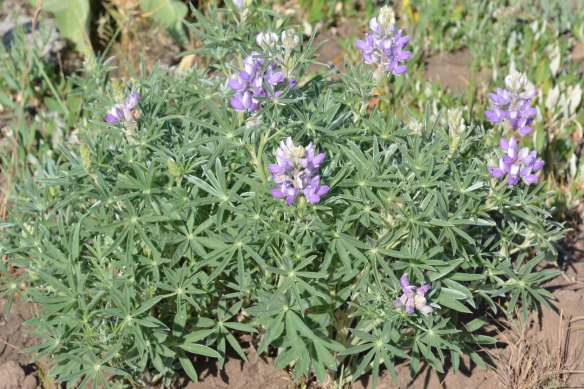

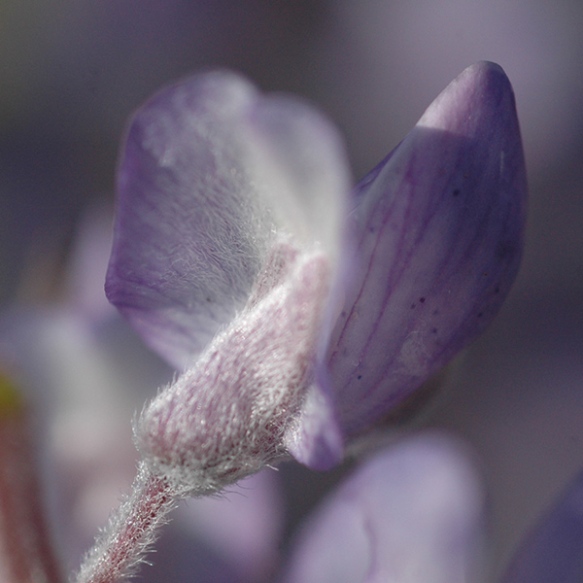
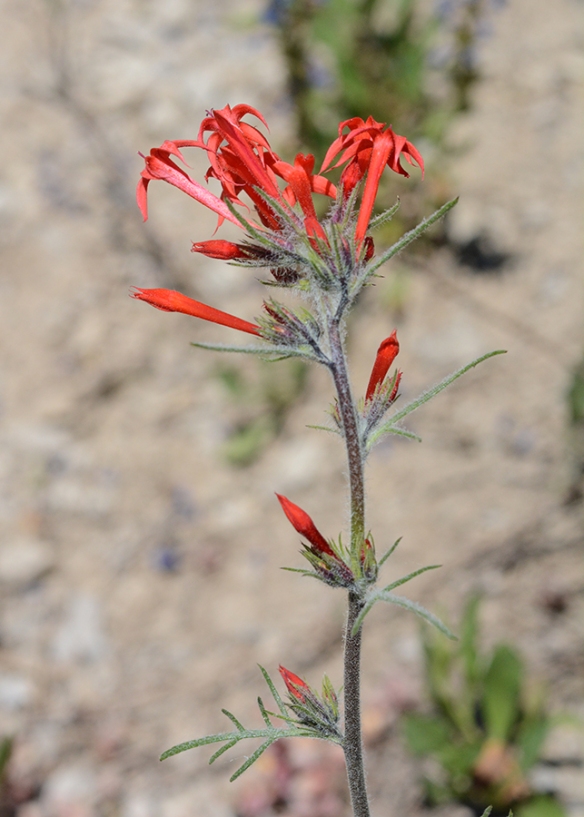
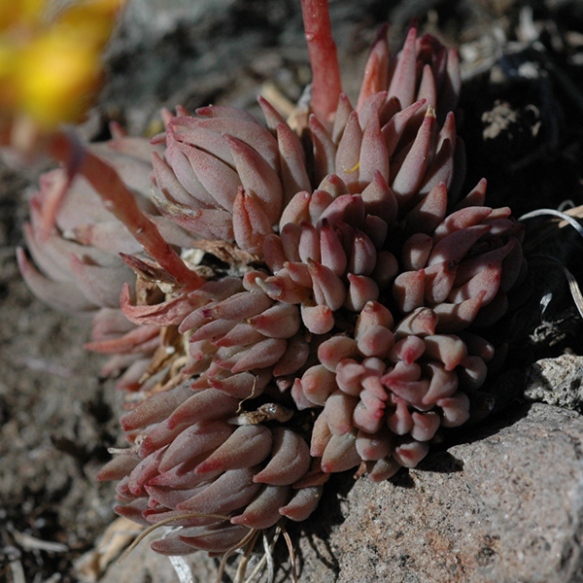
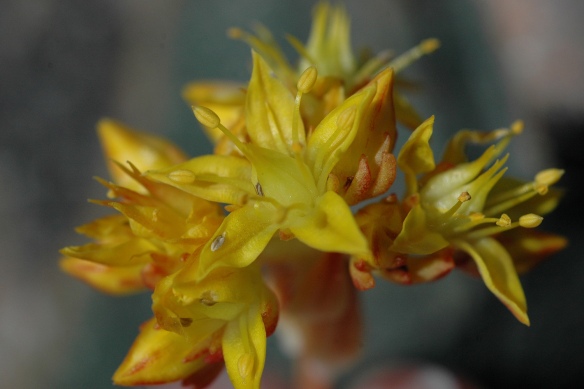
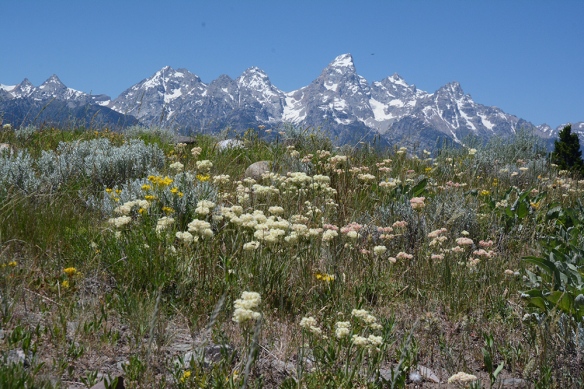
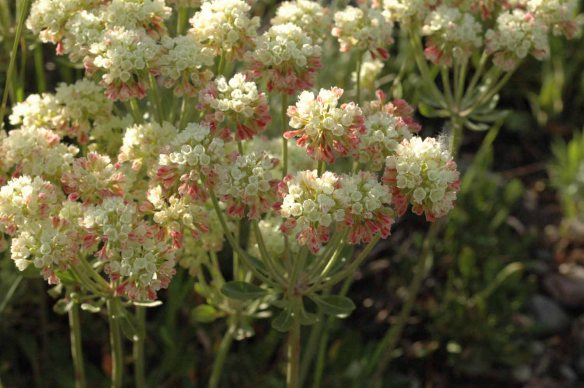
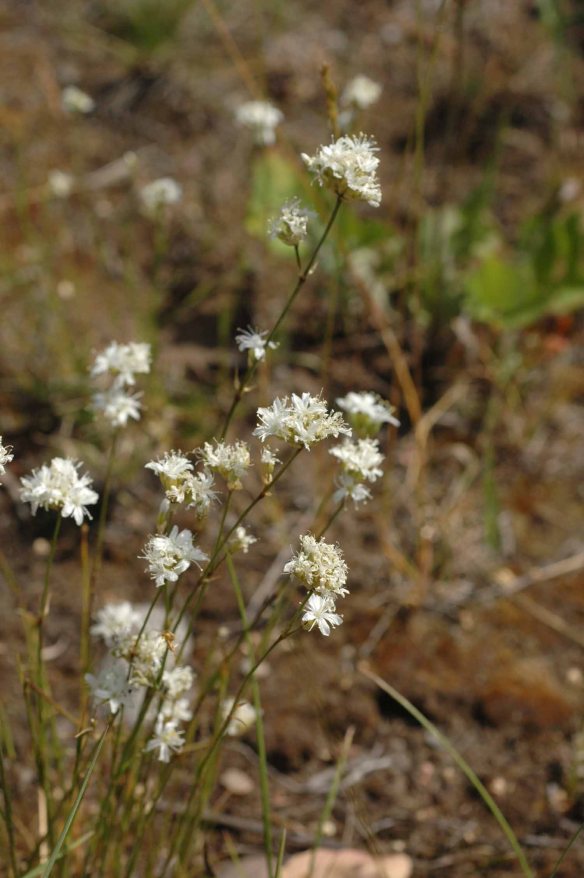

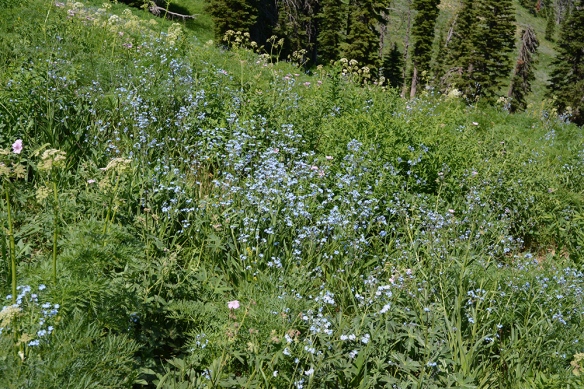


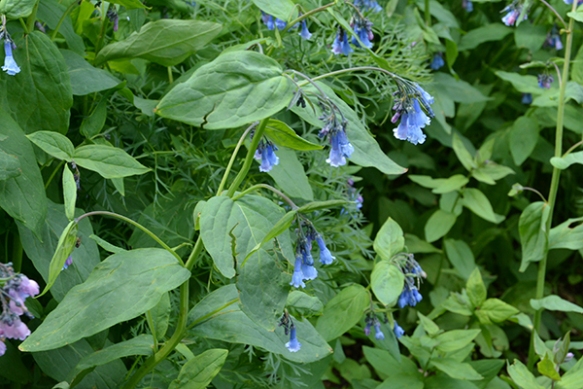
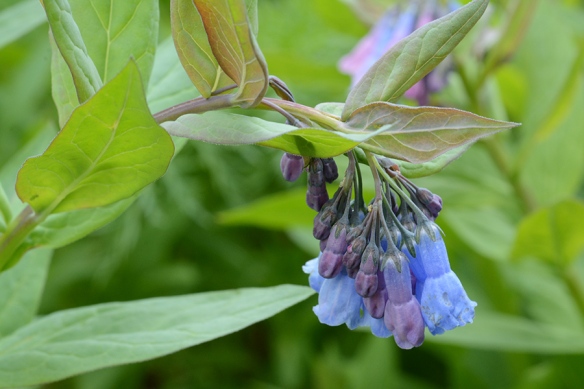
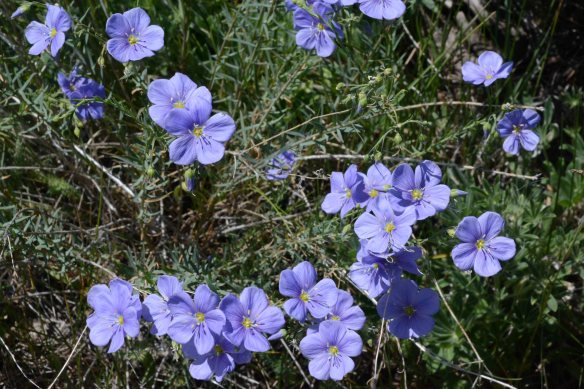
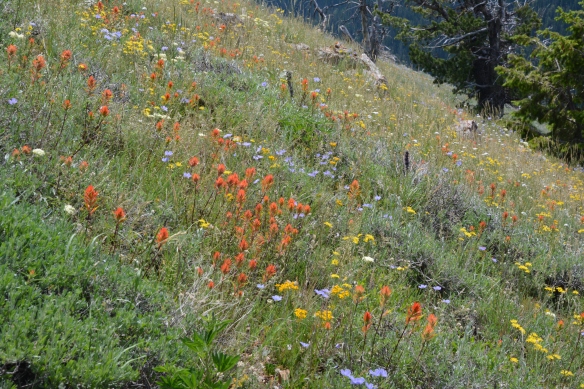 Found in a variety of habitats, Paintbrushes – Castilleja spp. – come in different colors and shapes. They hybridize, thereby forming intermediates, making ID difficult. Paintbrush flowers are complicated: most color comes from bracts and sepals, not from petals which are often green. Bracts are modified leaves found just below each flower. Each flower has 2-4 sepals fused together. The petals form a long tube with a lip, and are often hidden inside the bracts and sepals until the flower is in full bloom. This “galea” protects the anthers and stigma until pollination.
Found in a variety of habitats, Paintbrushes – Castilleja spp. – come in different colors and shapes. They hybridize, thereby forming intermediates, making ID difficult. Paintbrush flowers are complicated: most color comes from bracts and sepals, not from petals which are often green. Bracts are modified leaves found just below each flower. Each flower has 2-4 sepals fused together. The petals form a long tube with a lip, and are often hidden inside the bracts and sepals until the flower is in full bloom. This “galea” protects the anthers and stigma until pollination.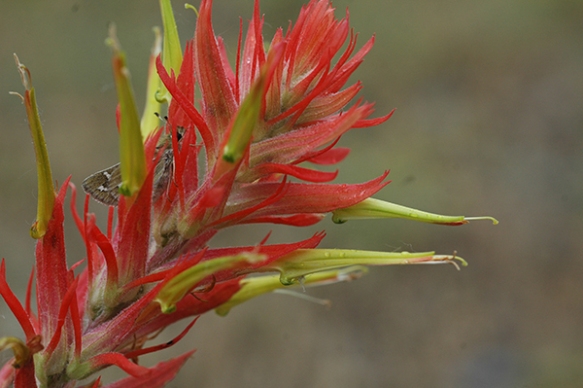
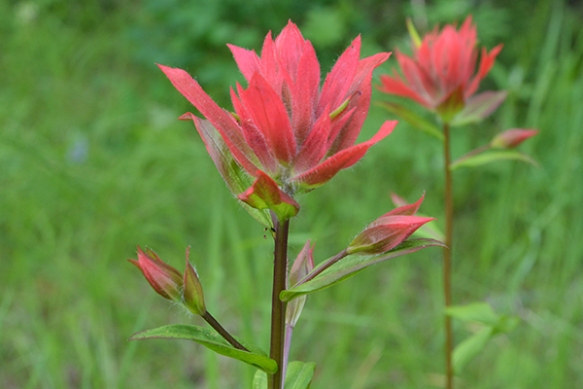
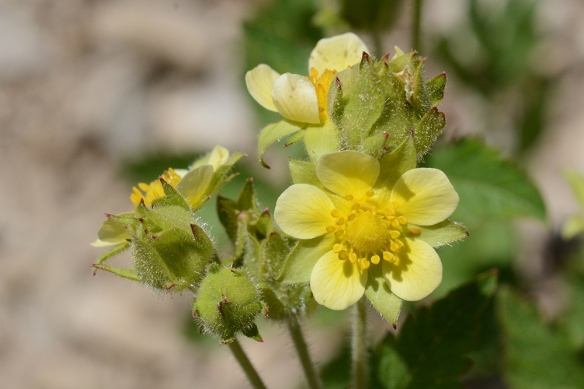

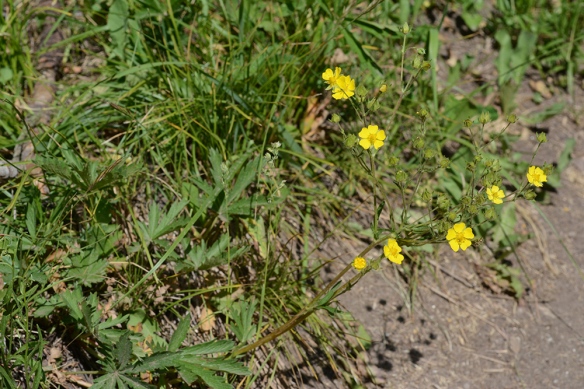
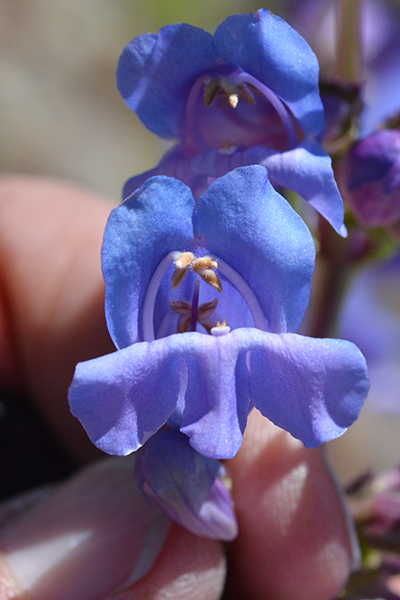
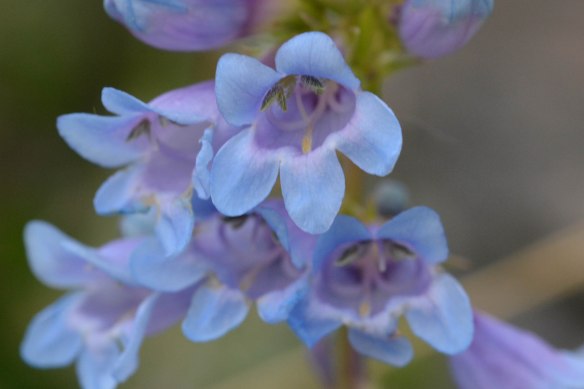
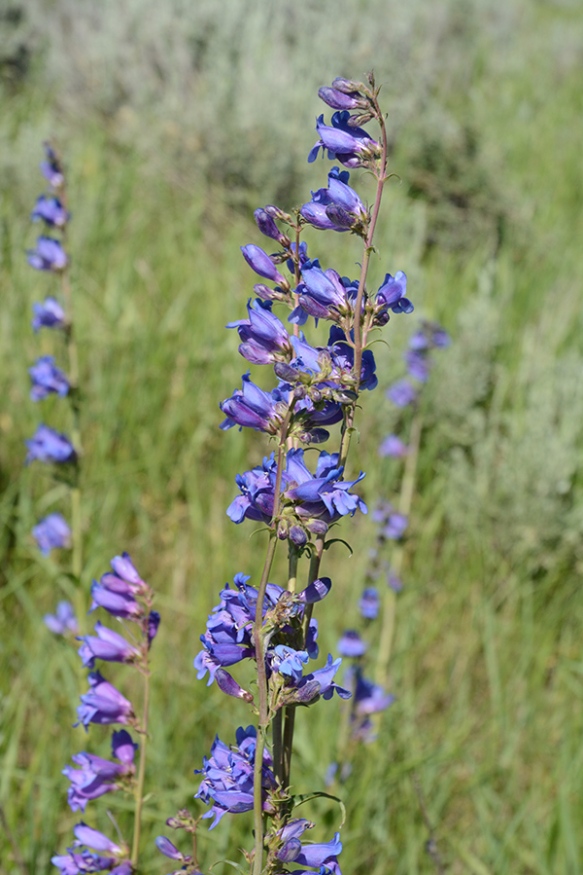
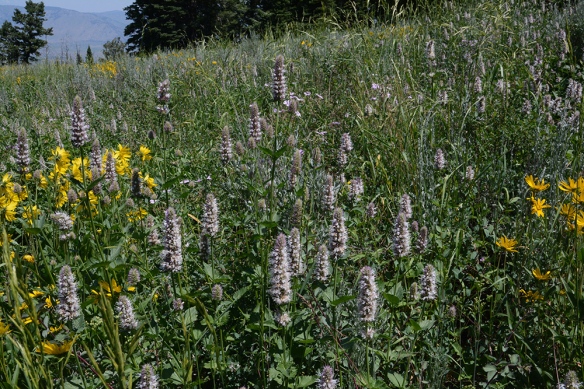
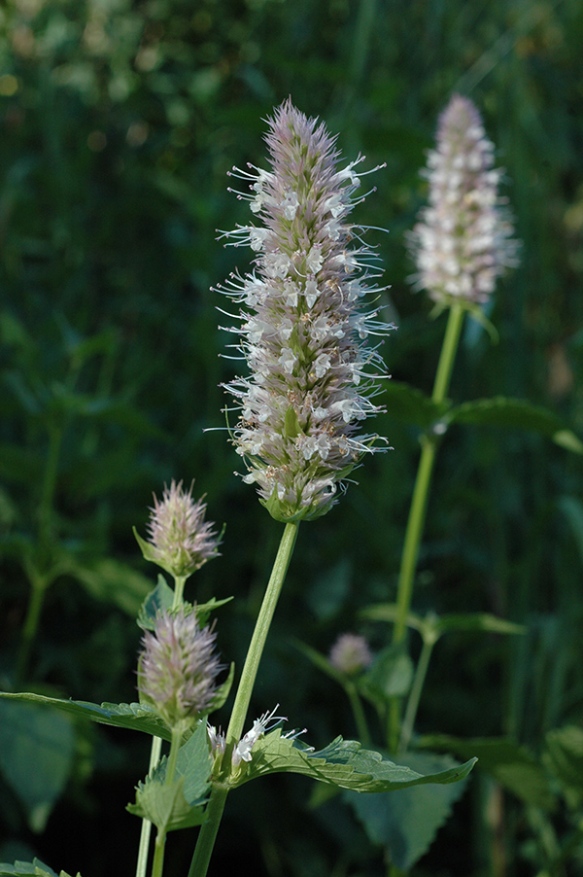

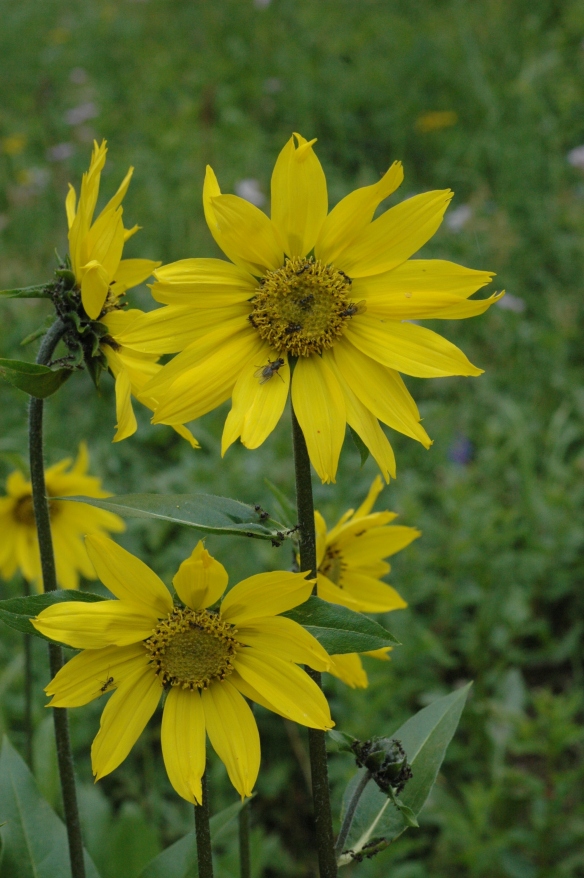
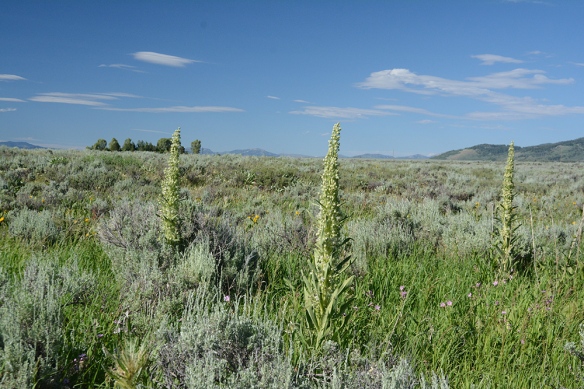
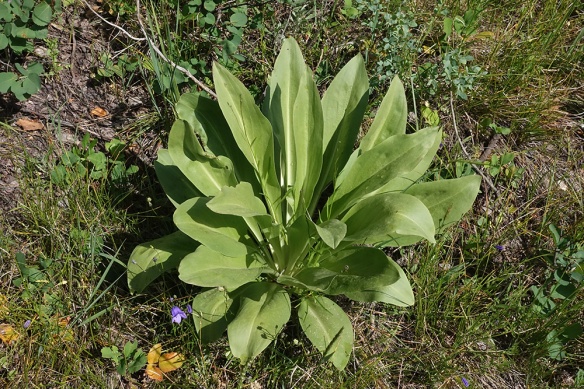
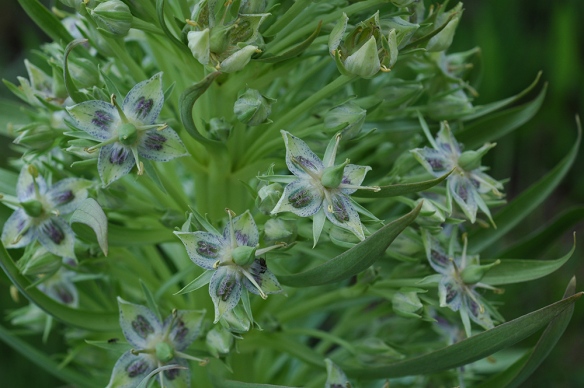
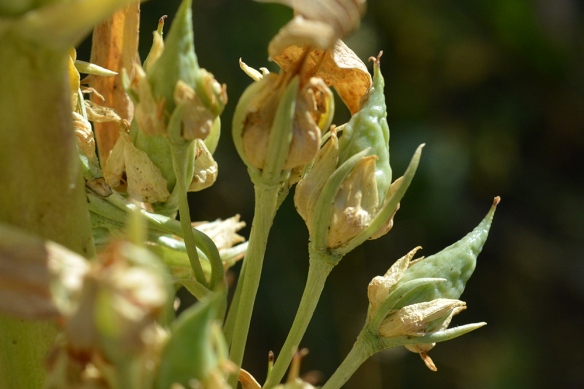


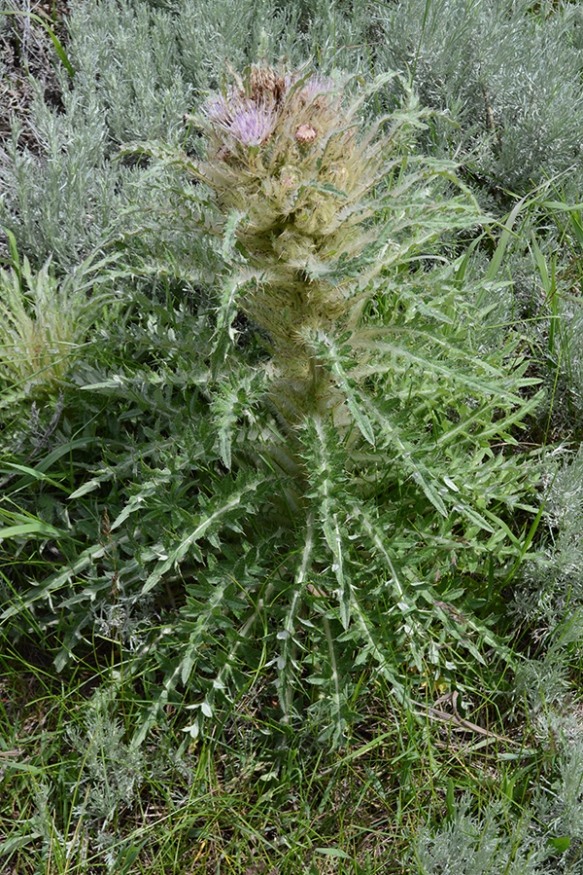

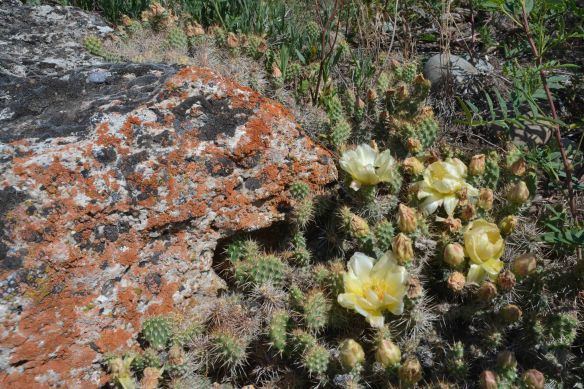
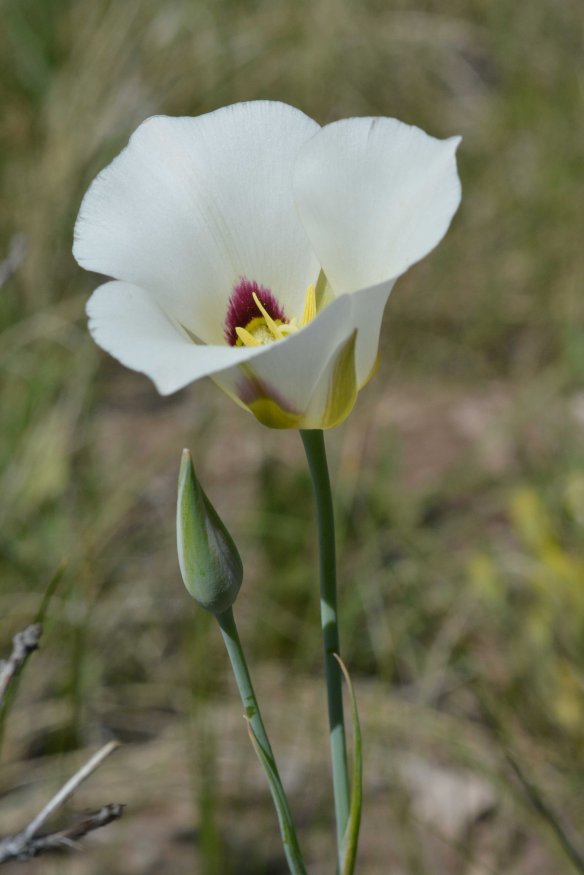
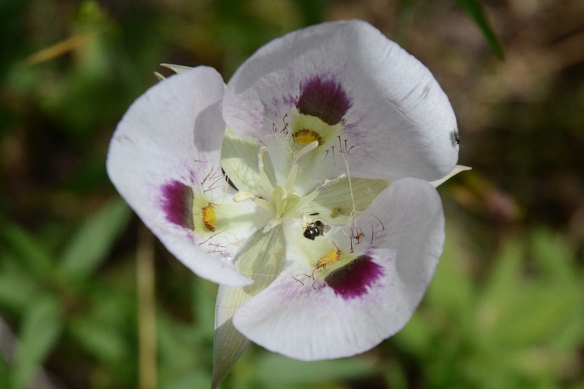
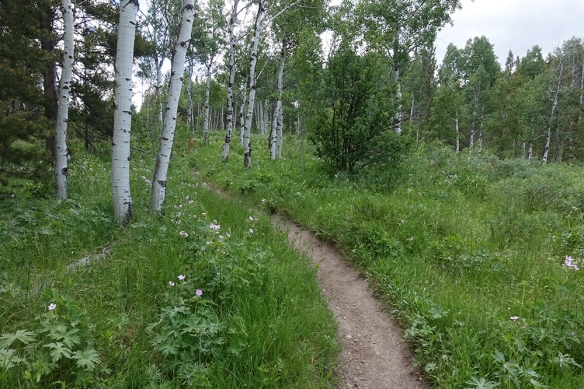 The number of fresh flowers is overwhelming hiking up Old Pass Road, Ski Lake, Munger Mountain and other trails with aspen groves and coniferous forests intermingle with meadows. The range of sun and shade, moisture and soils provides opportunities for a diversity of wildflowers to find their niche. Some plants are generalists, others are specific in their growing needs. All have evolved pollination techniques which are fascinating to observe and underground connections which we can only imagine.
The number of fresh flowers is overwhelming hiking up Old Pass Road, Ski Lake, Munger Mountain and other trails with aspen groves and coniferous forests intermingle with meadows. The range of sun and shade, moisture and soils provides opportunities for a diversity of wildflowers to find their niche. Some plants are generalists, others are specific in their growing needs. All have evolved pollination techniques which are fascinating to observe and underground connections which we can only imagine.